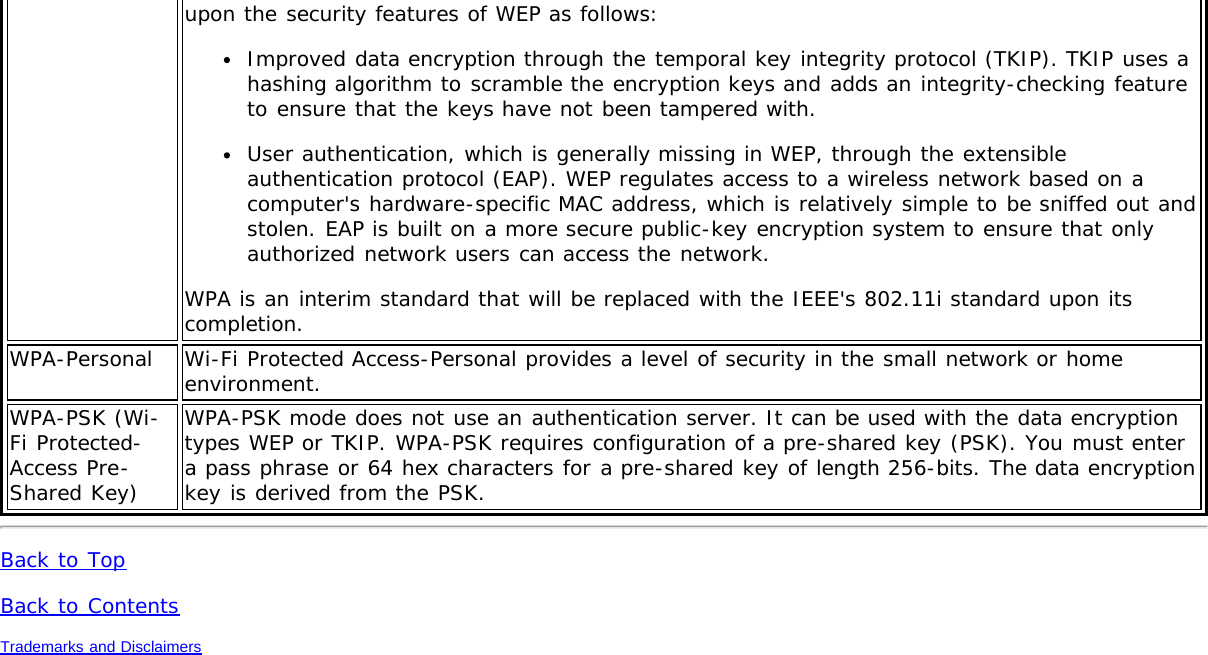Intel 3160H Wireless Network Adapter User Manual Intel WiFi Adapter Information Guide
Intel Mobile Communications Wireless Network Adapter Intel WiFi Adapter Information Guide
Intel >
Contents
- 1. User Manual
- 2. User Manual 1
- 3. User Manual 2
User Manual
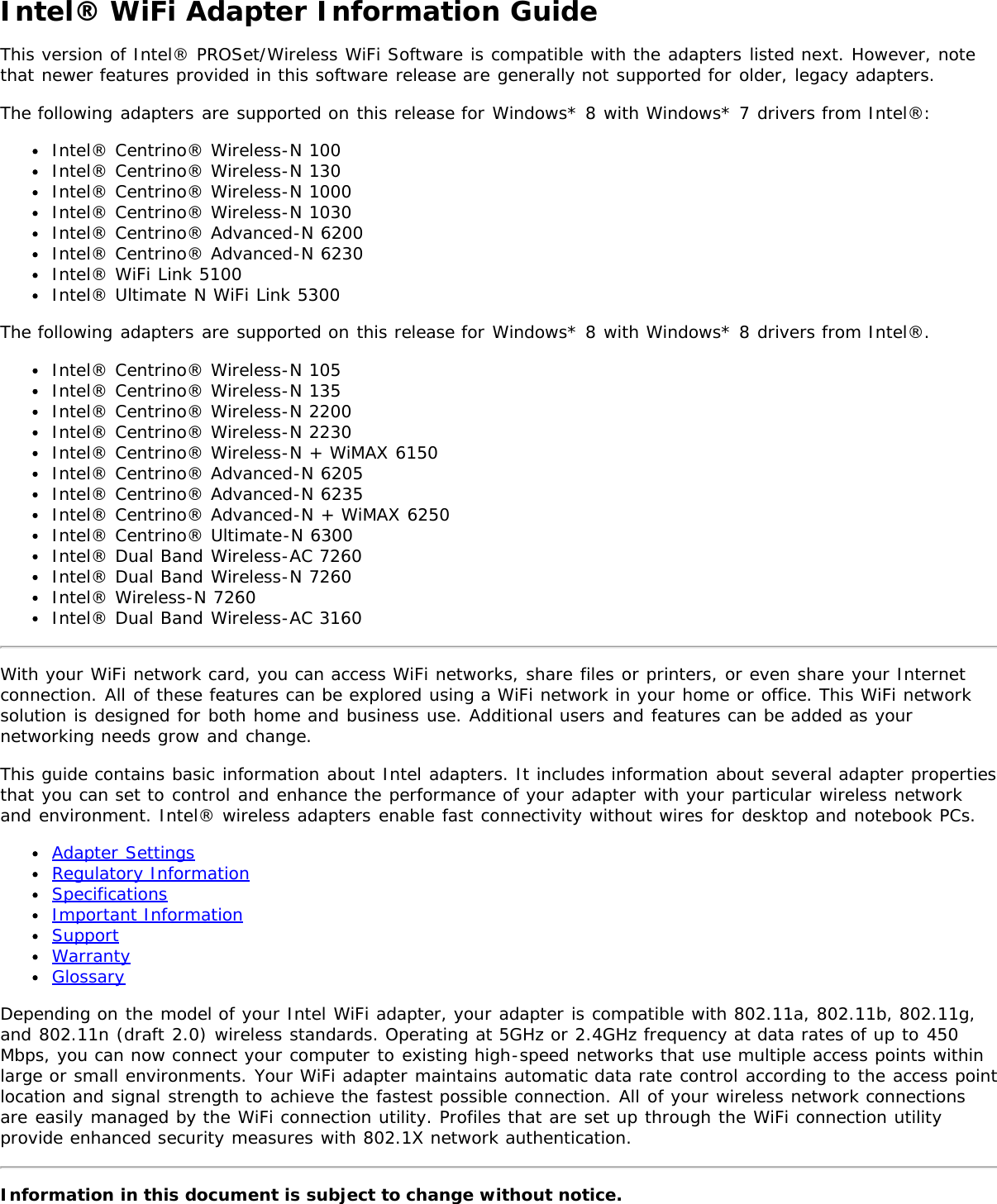
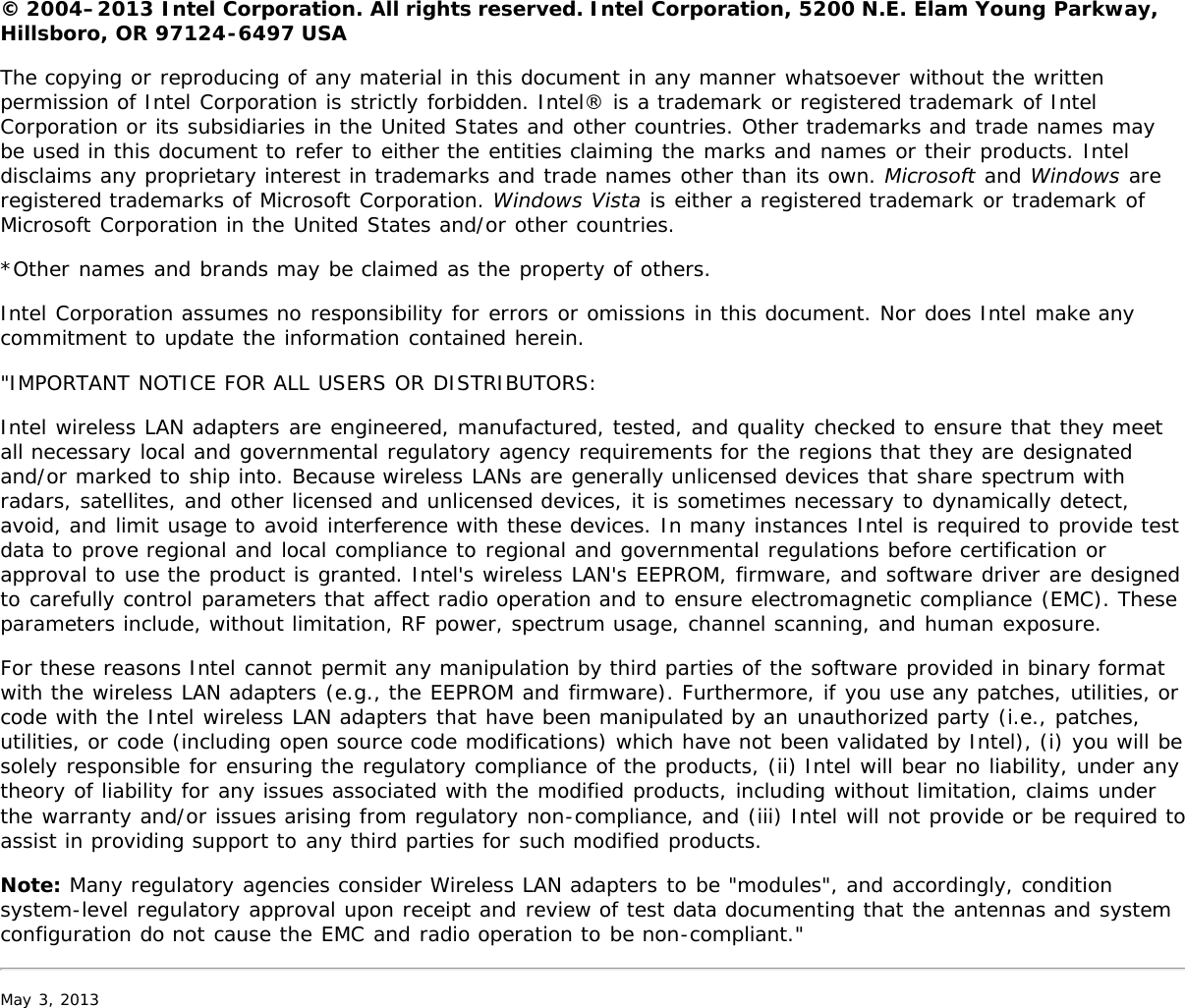
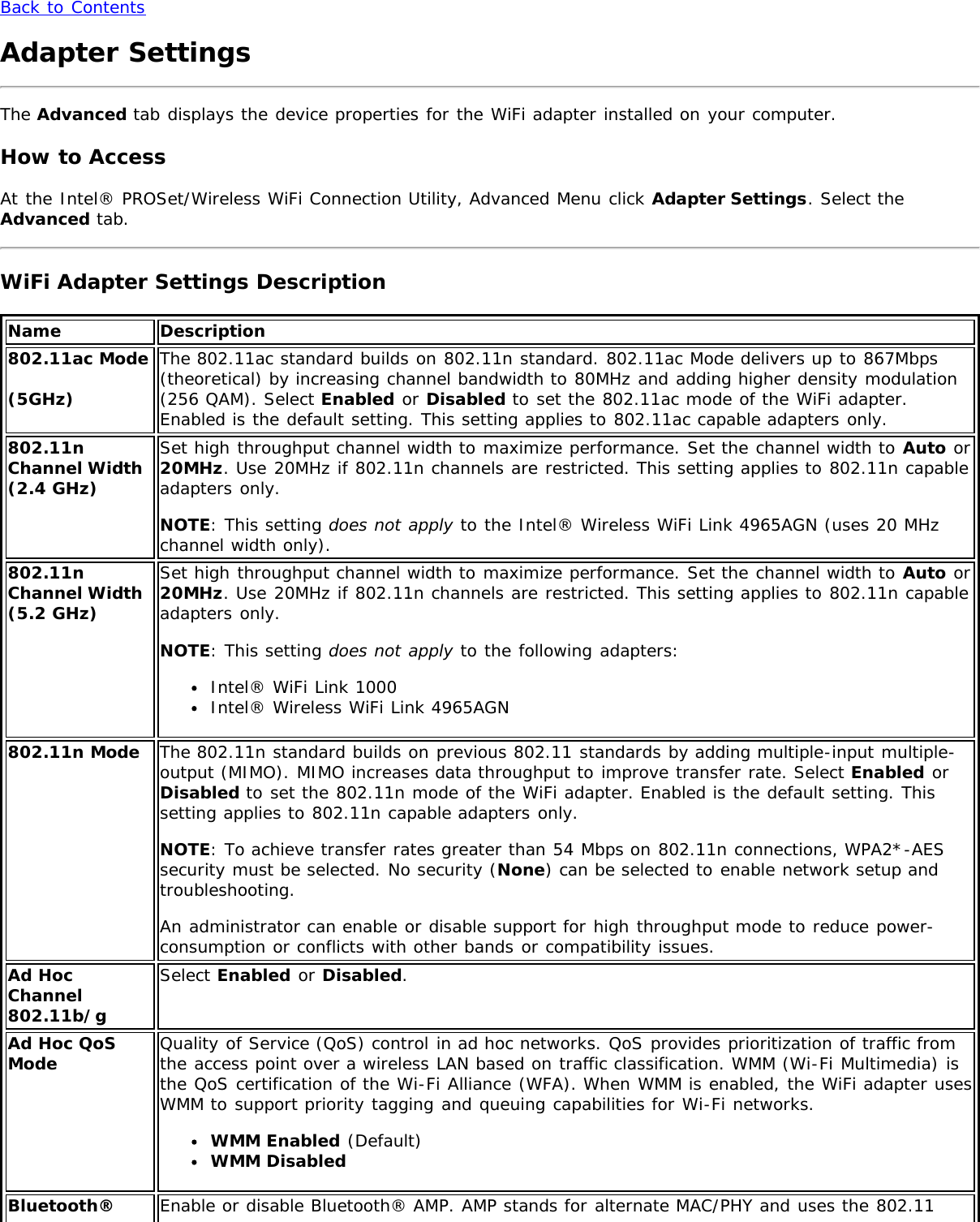
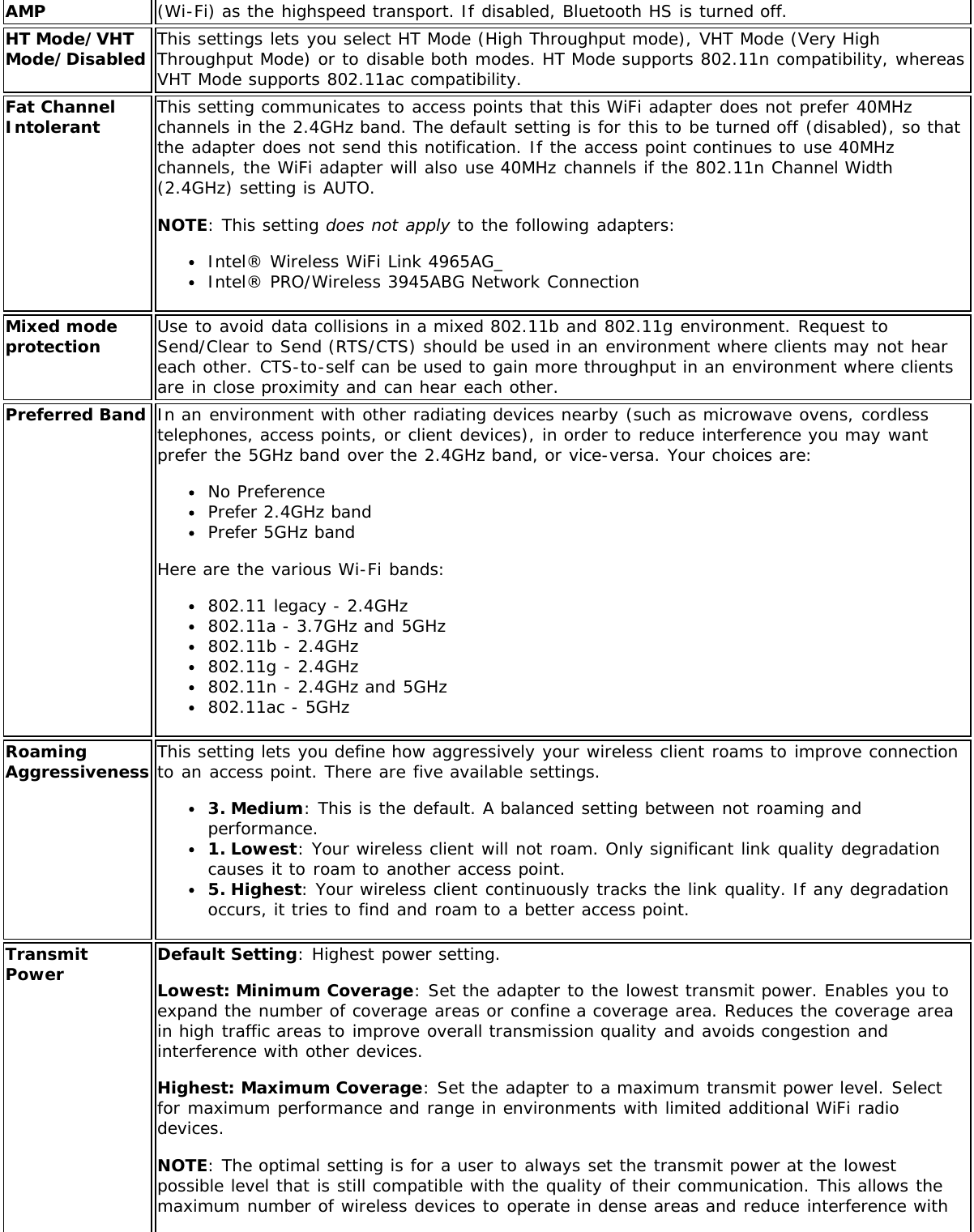
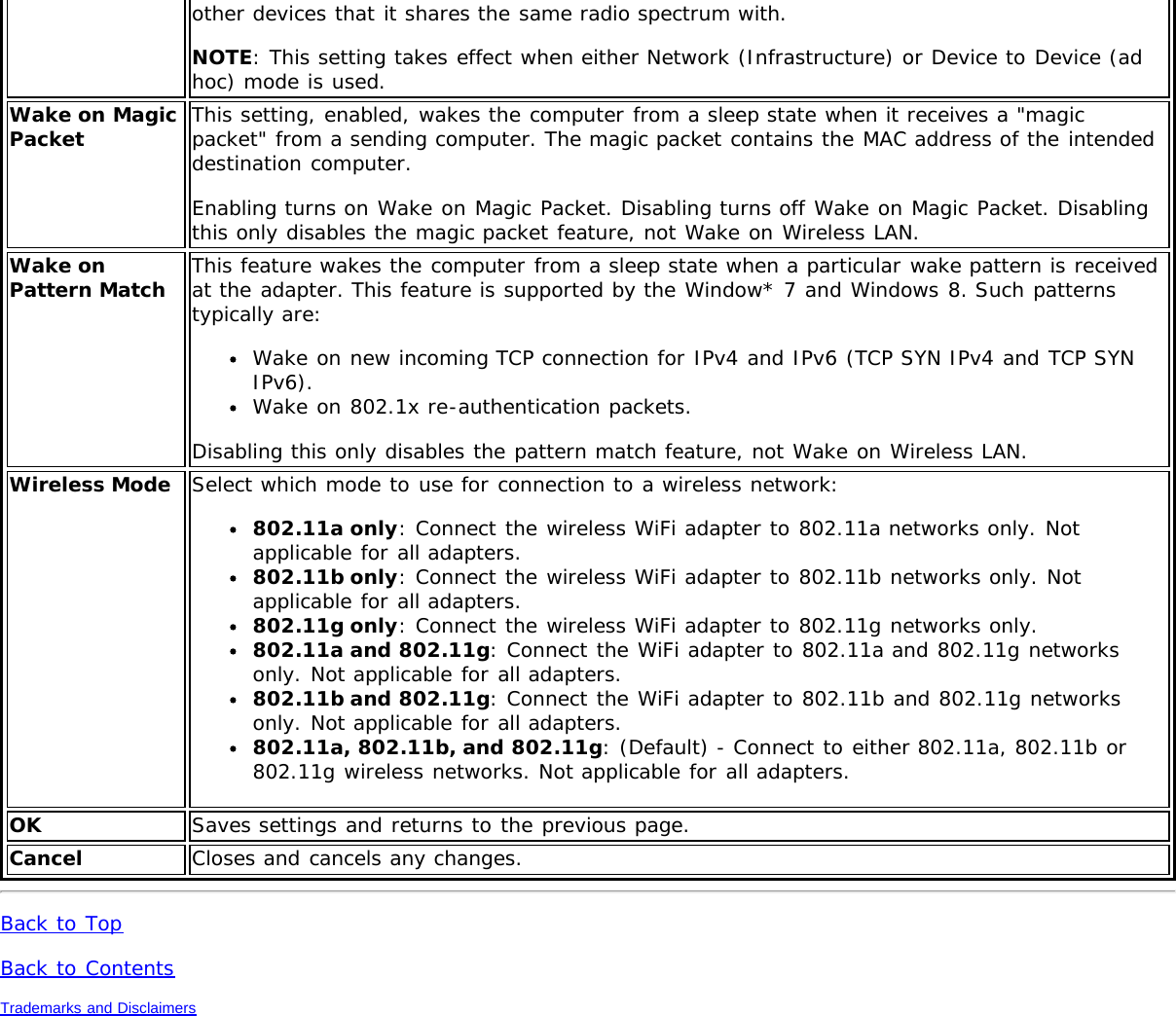
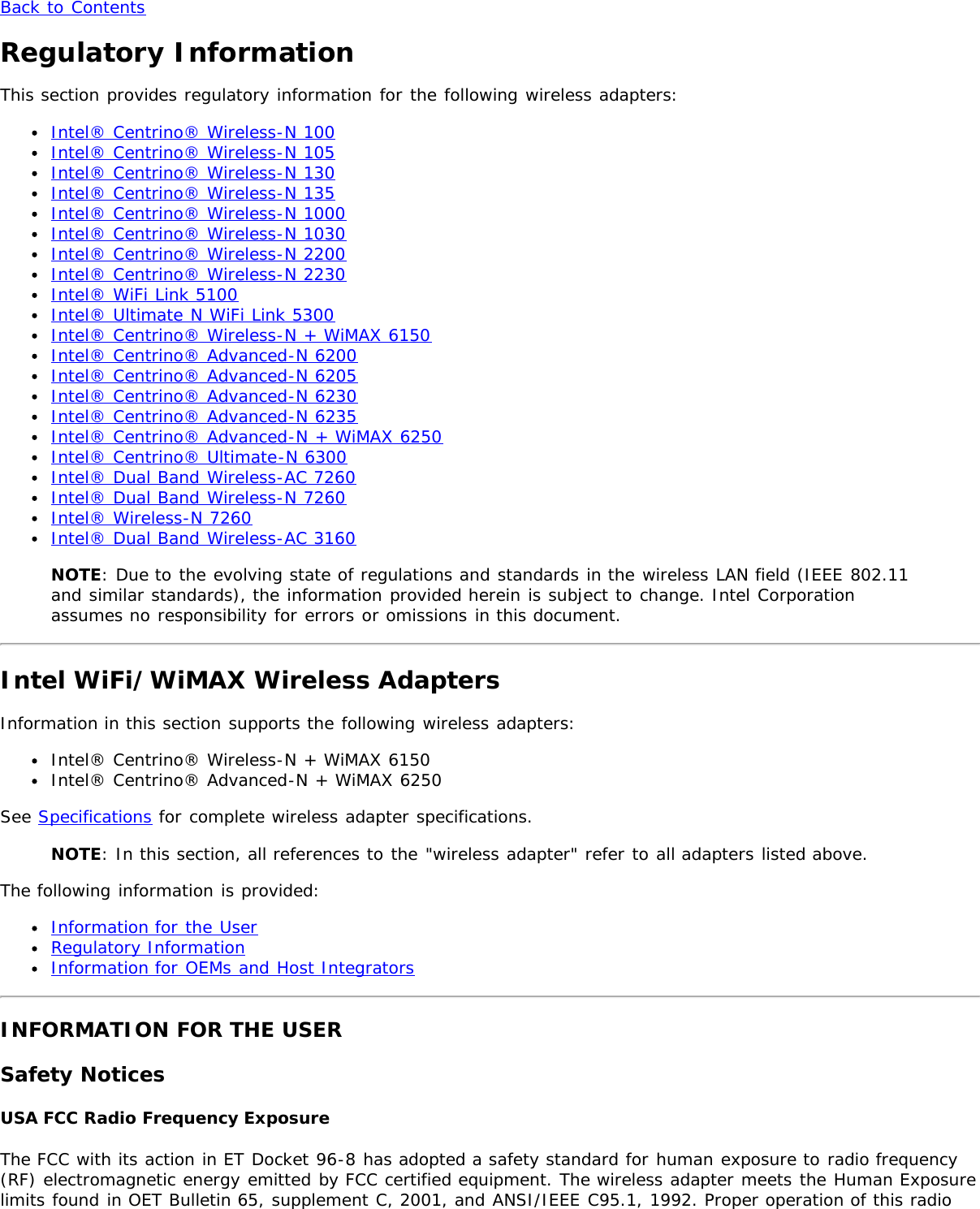
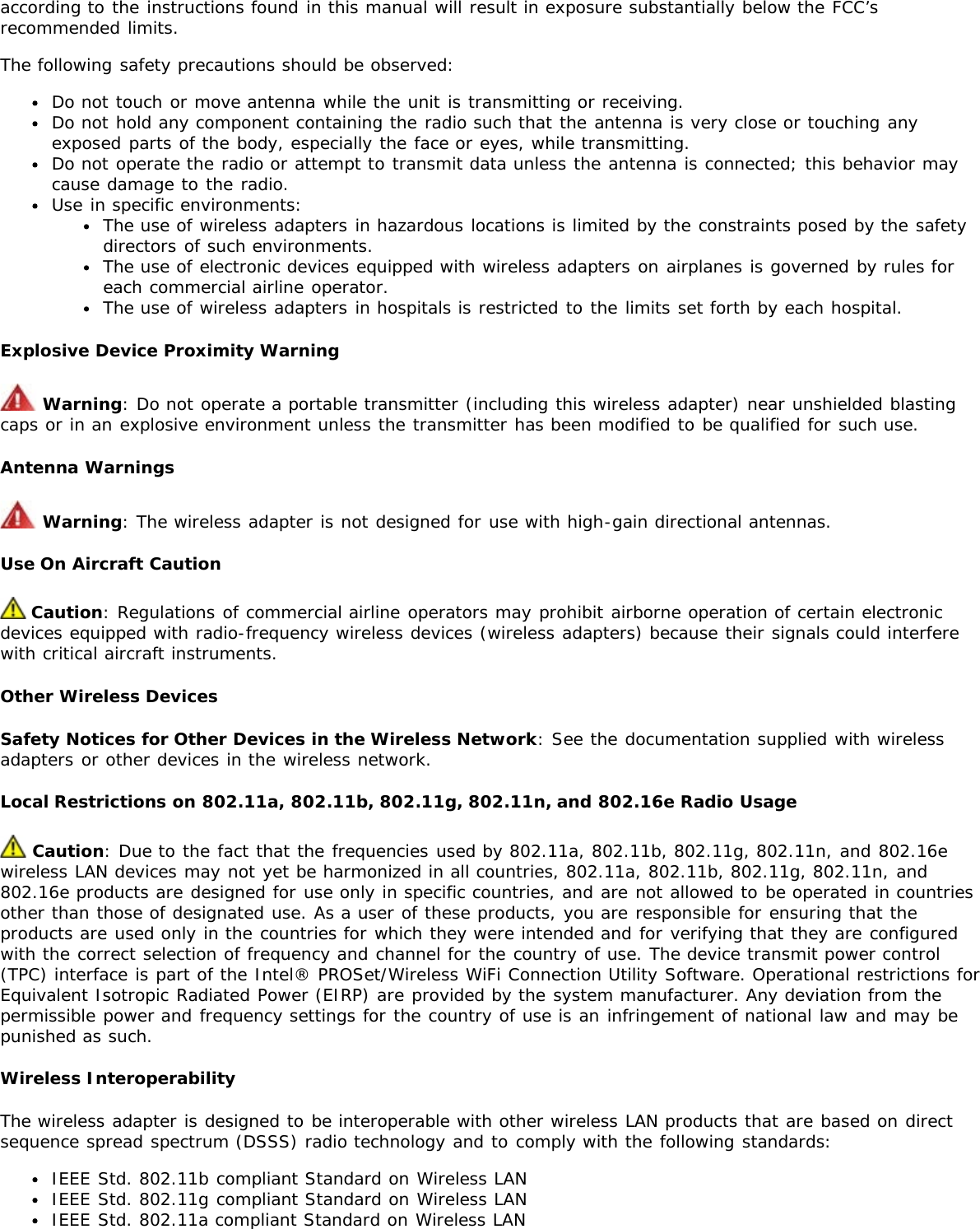
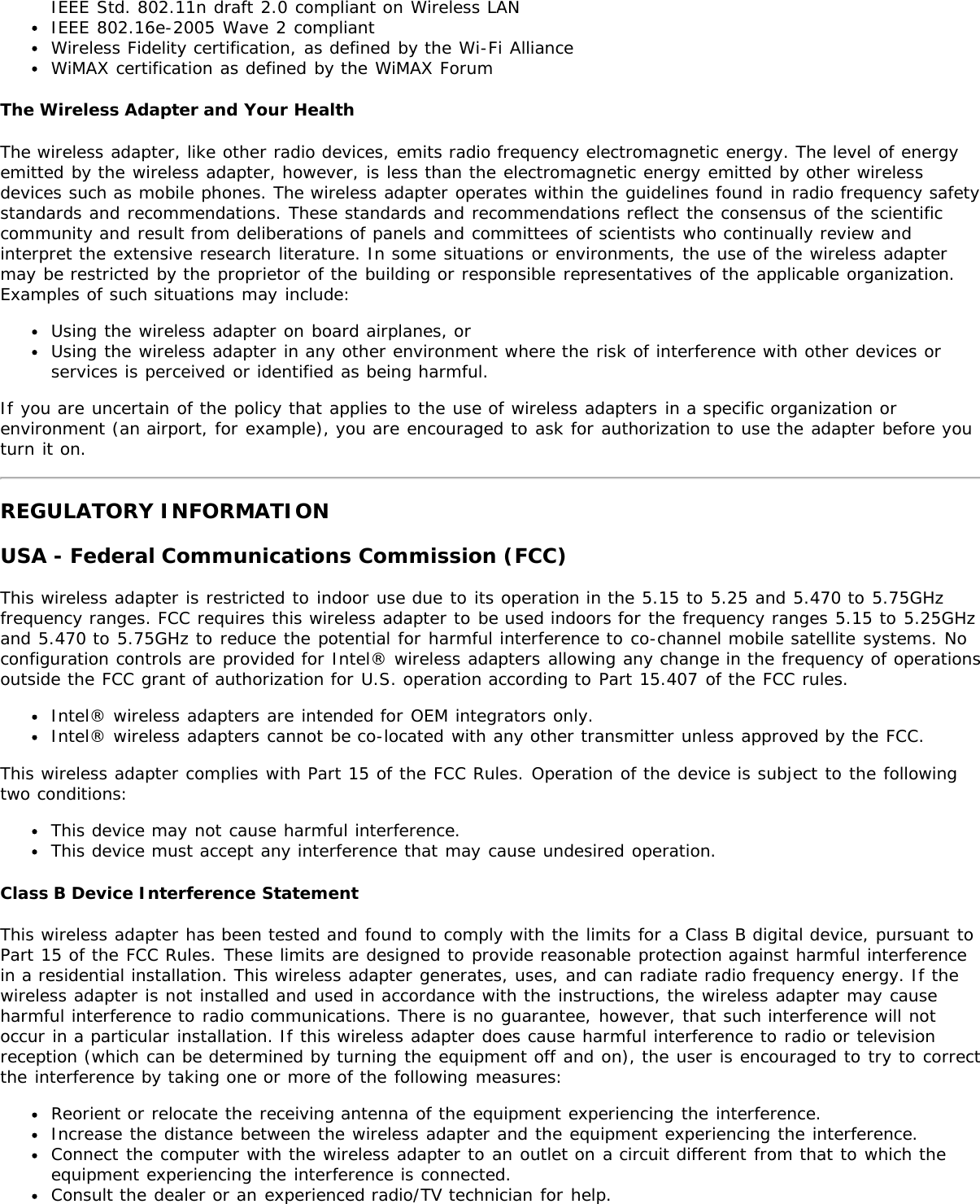
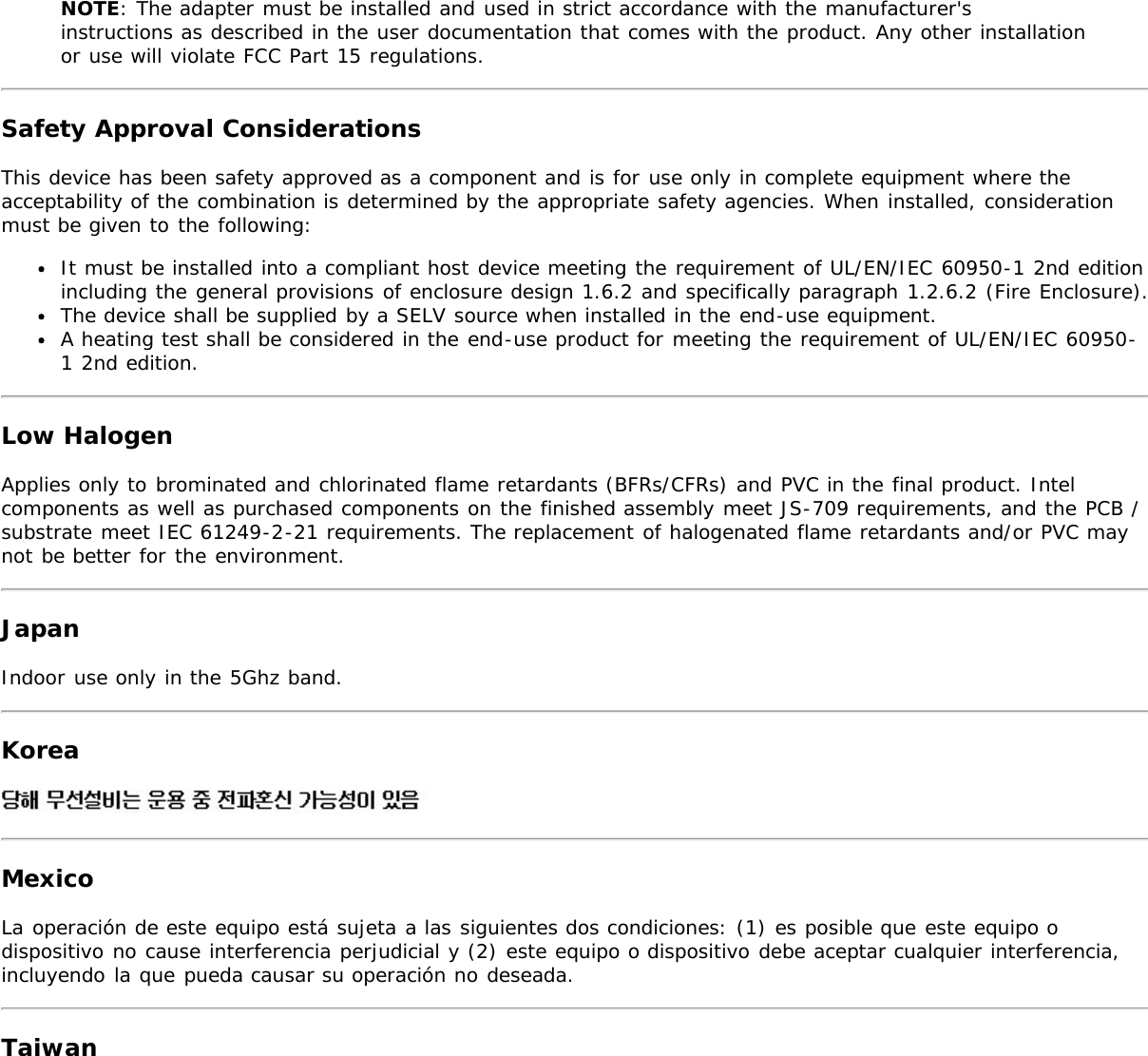
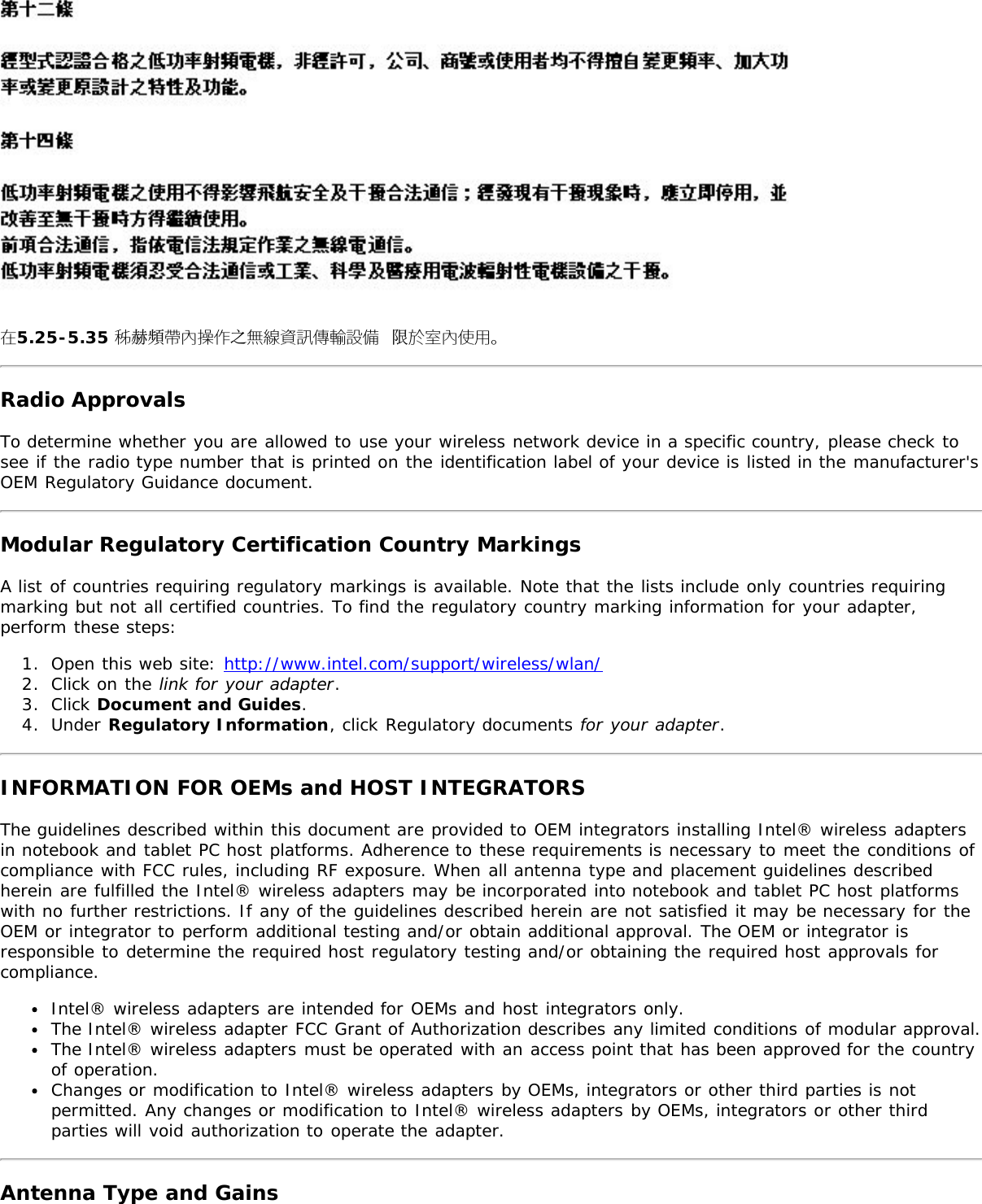
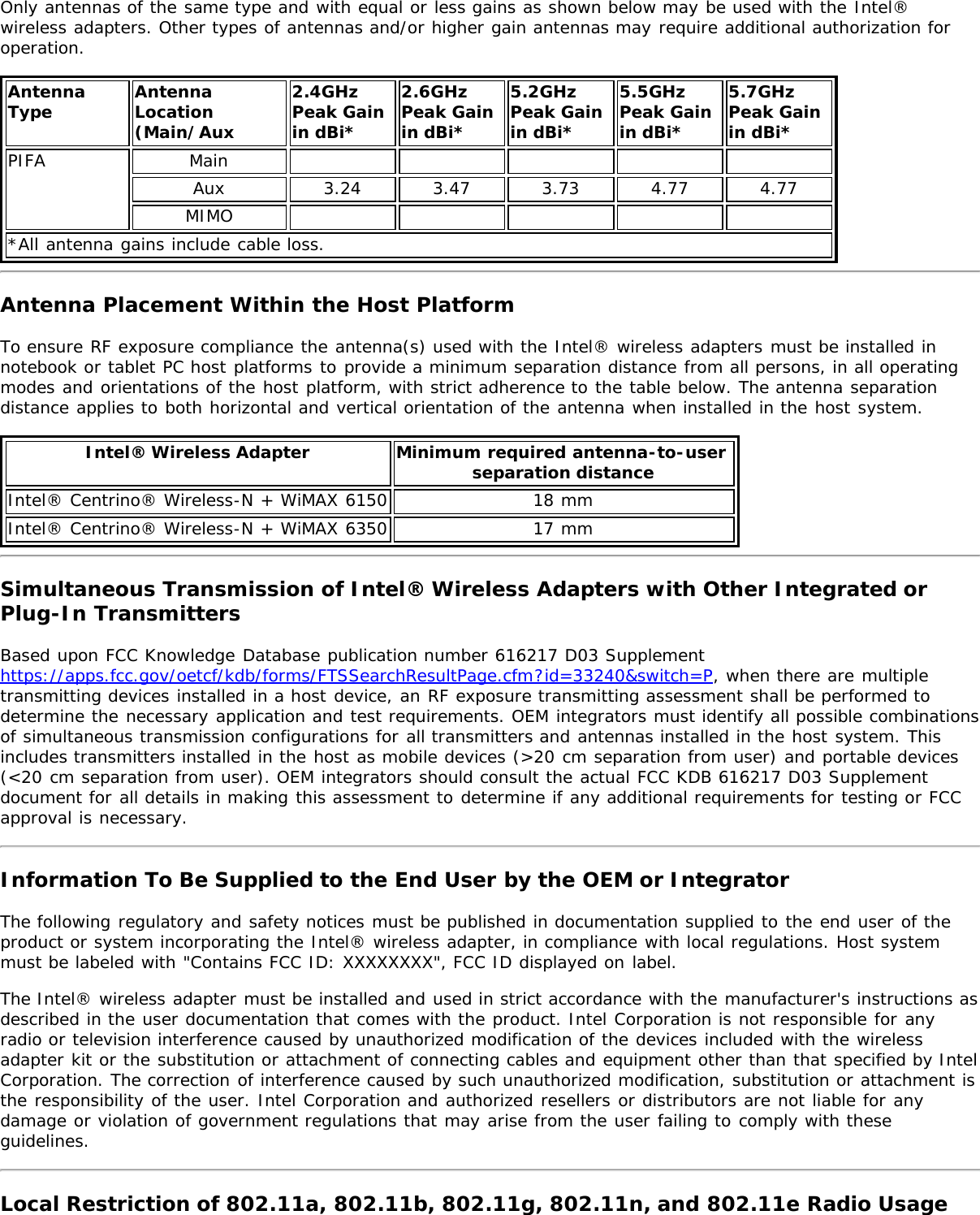
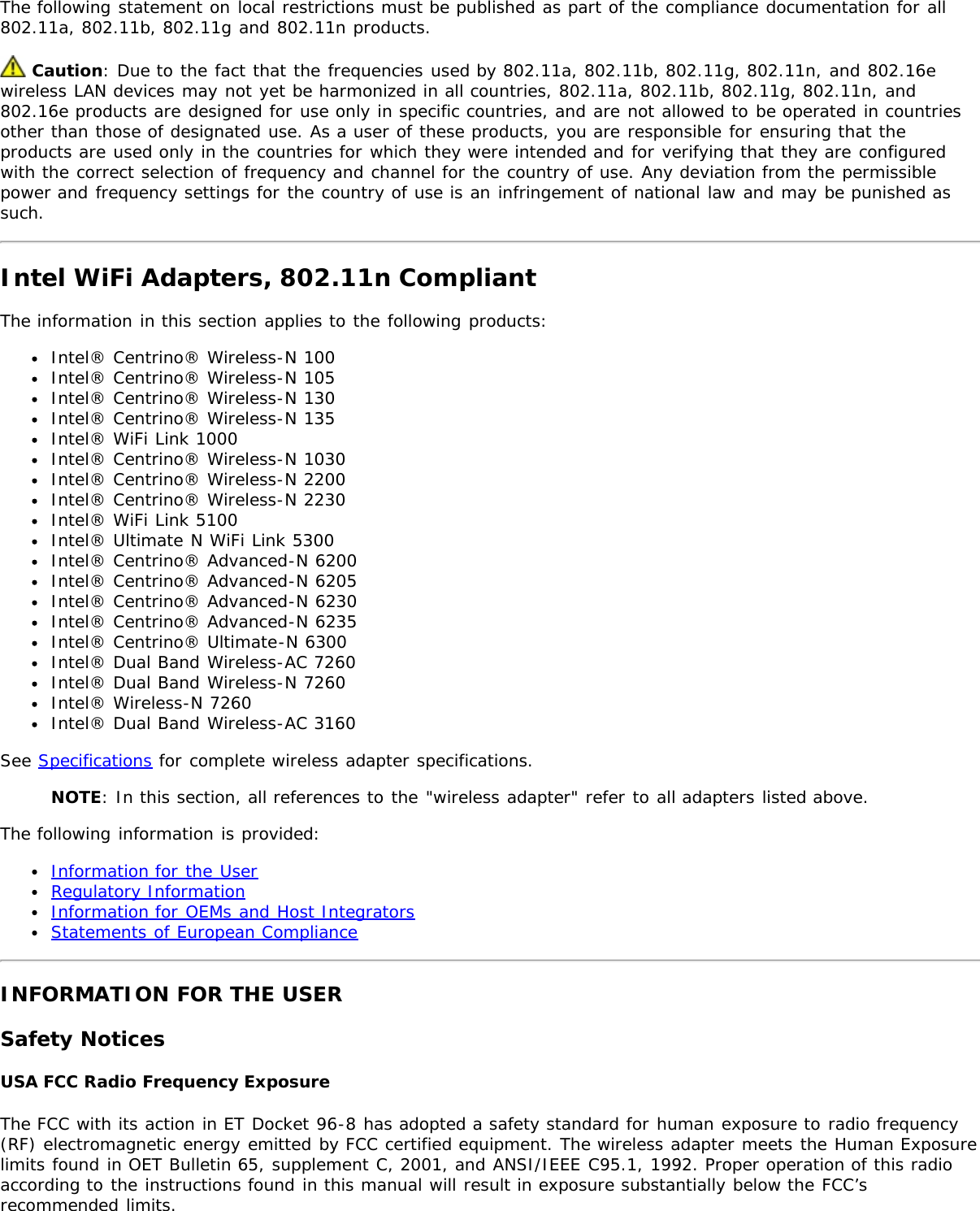
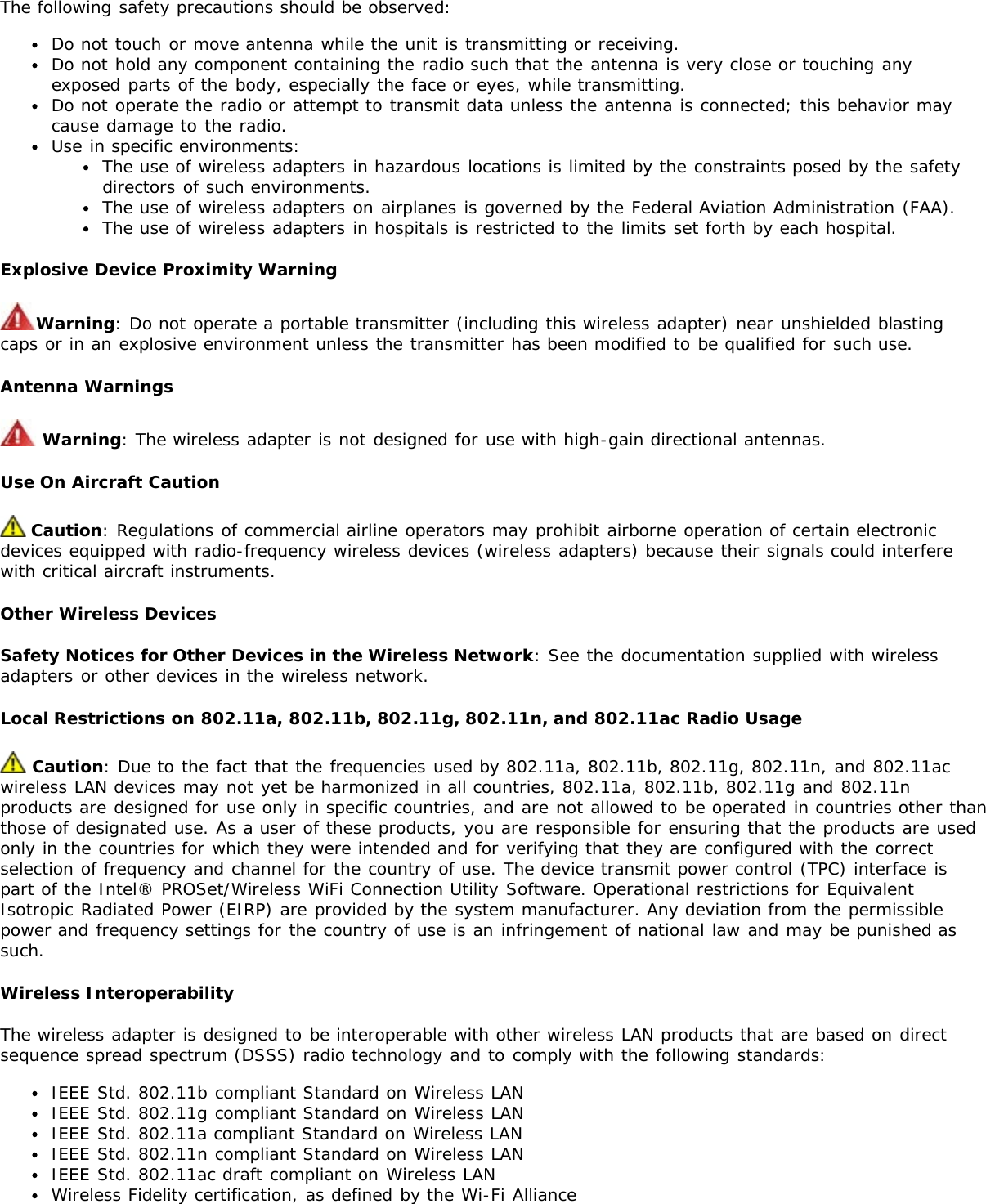
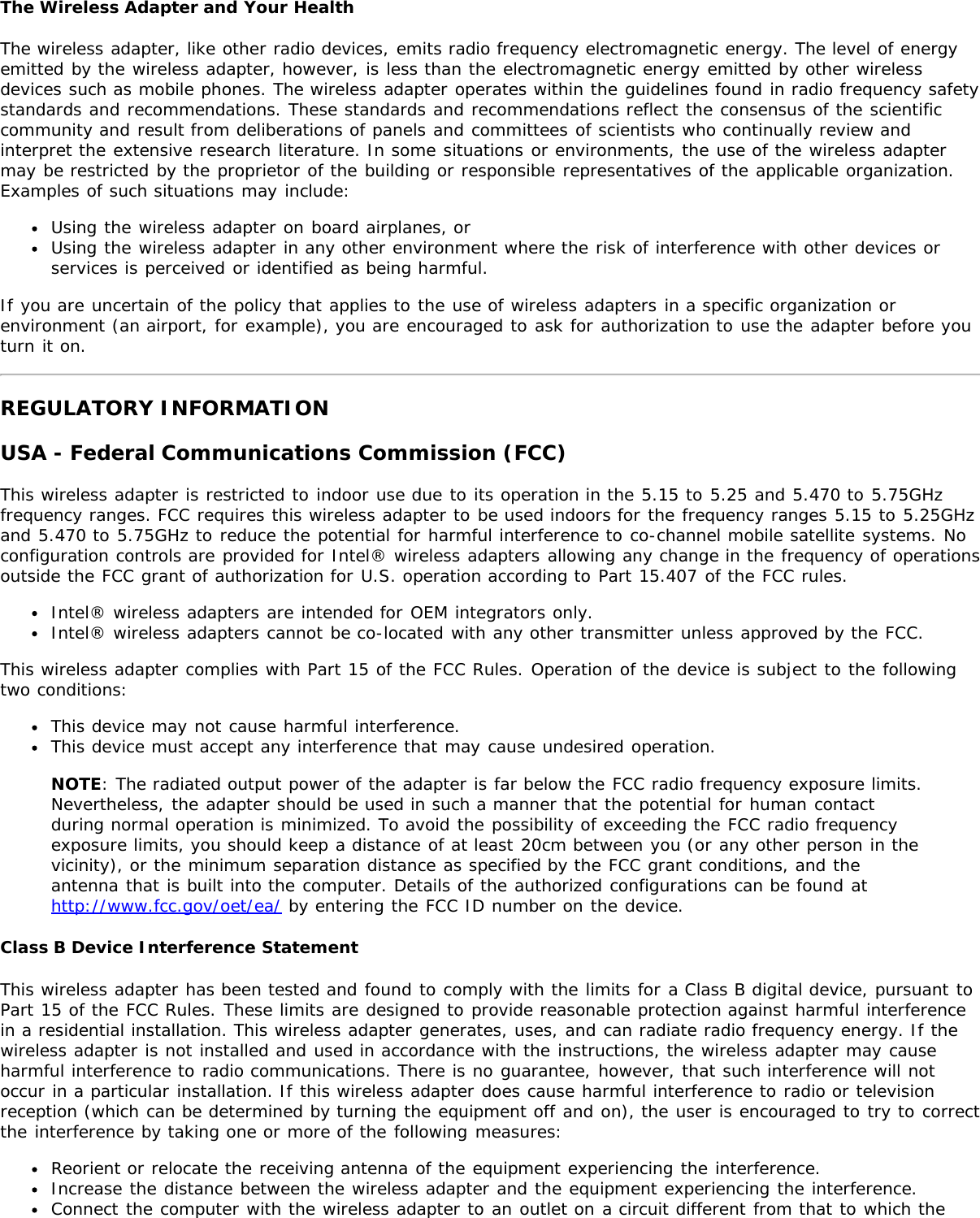
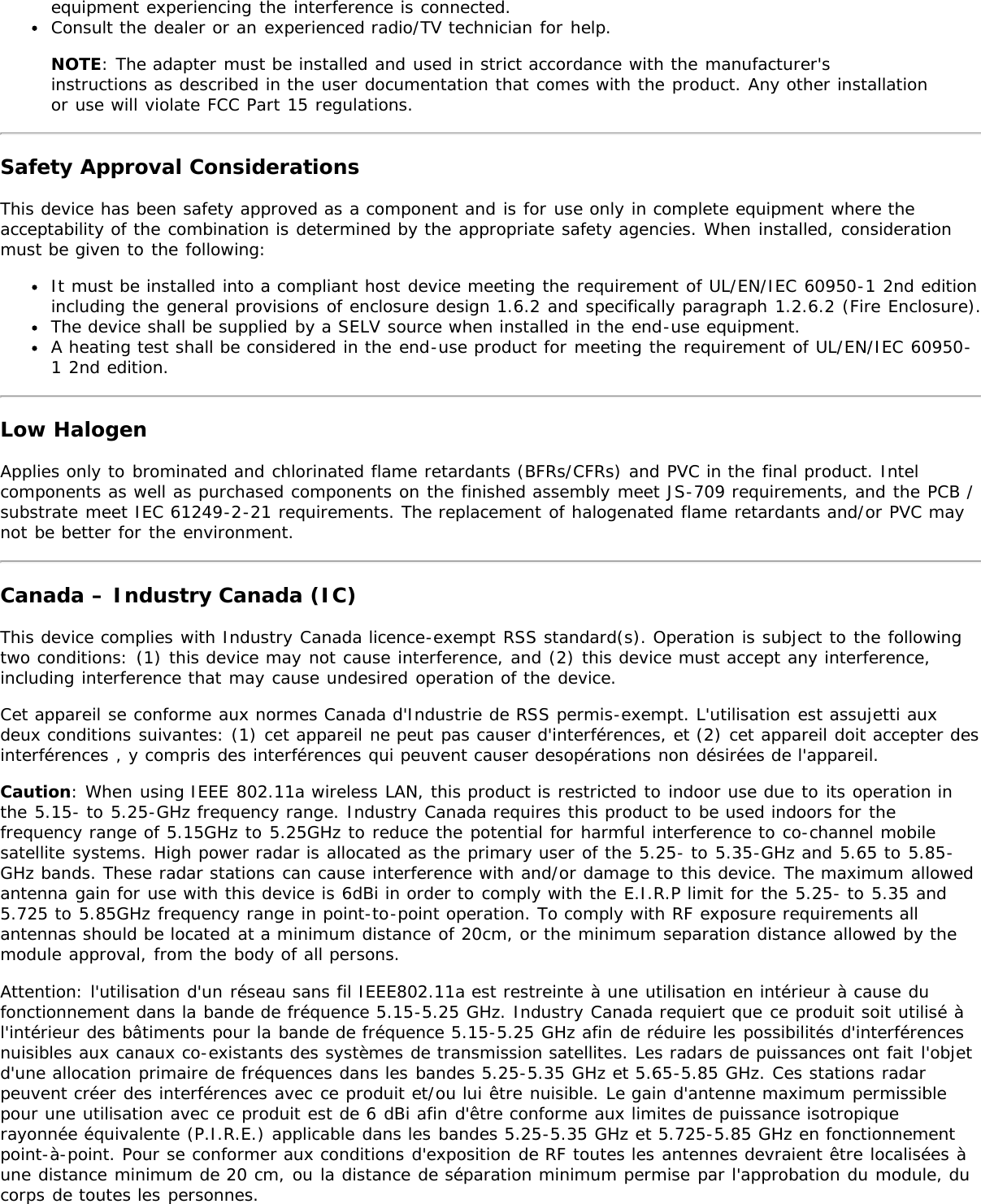
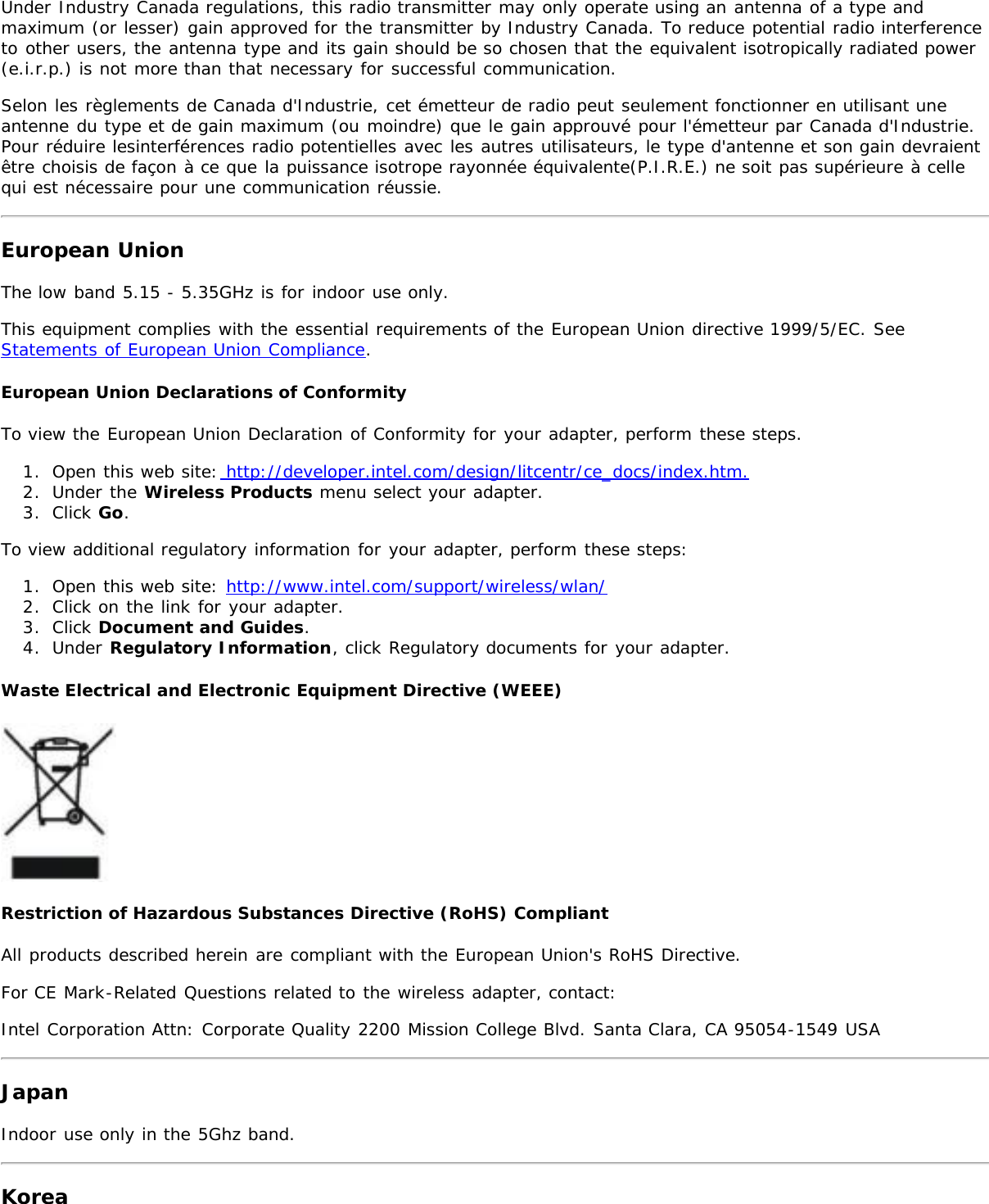
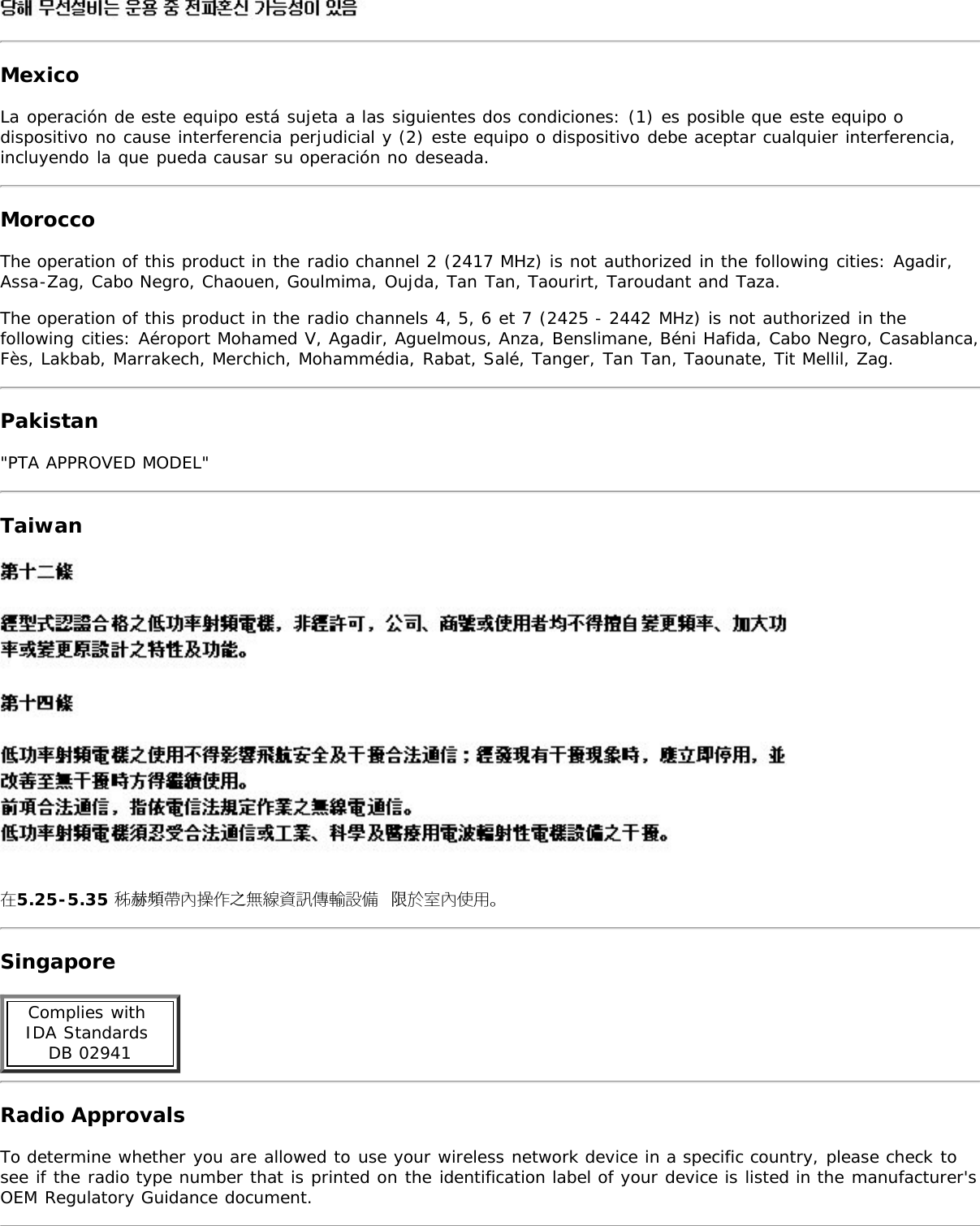
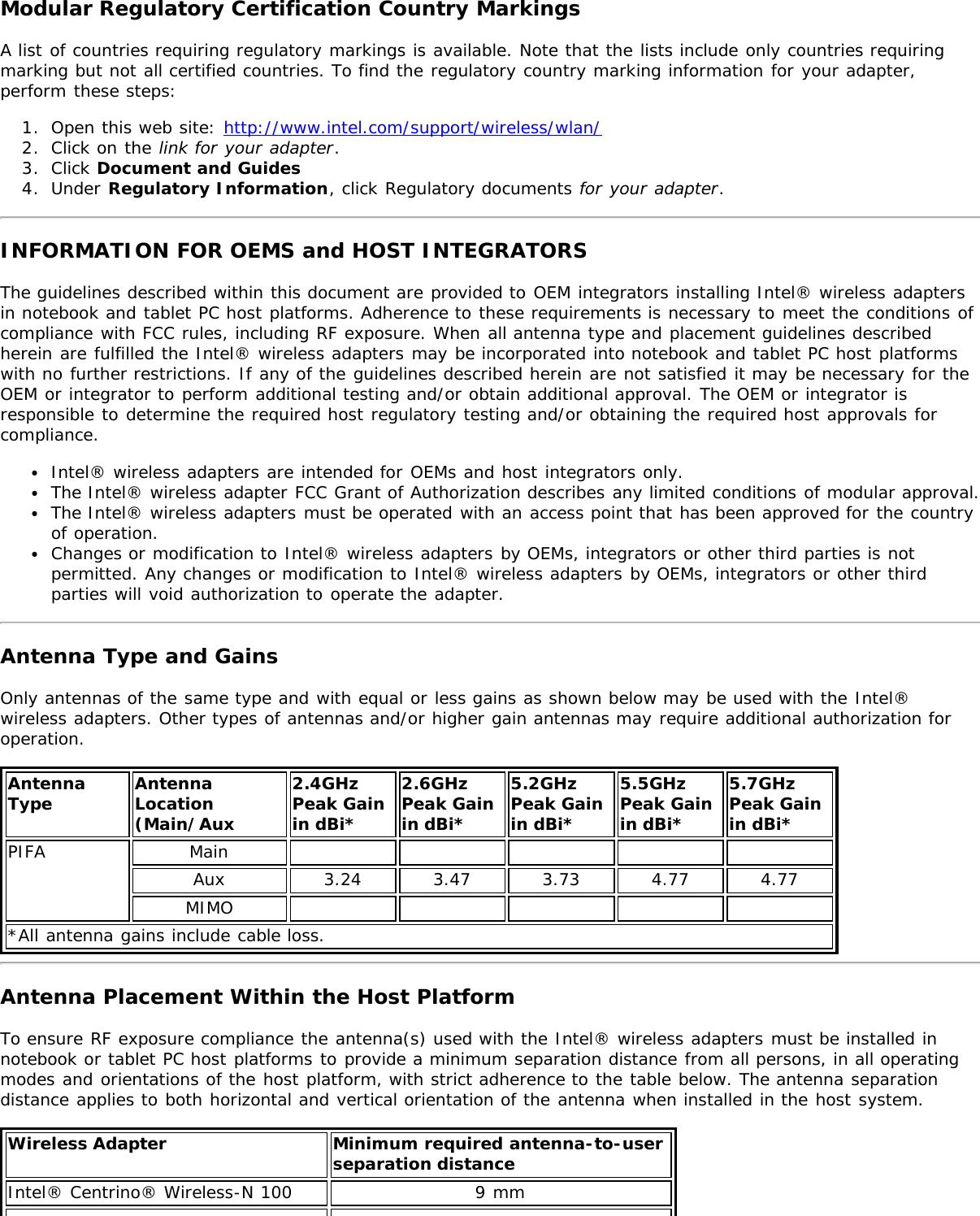
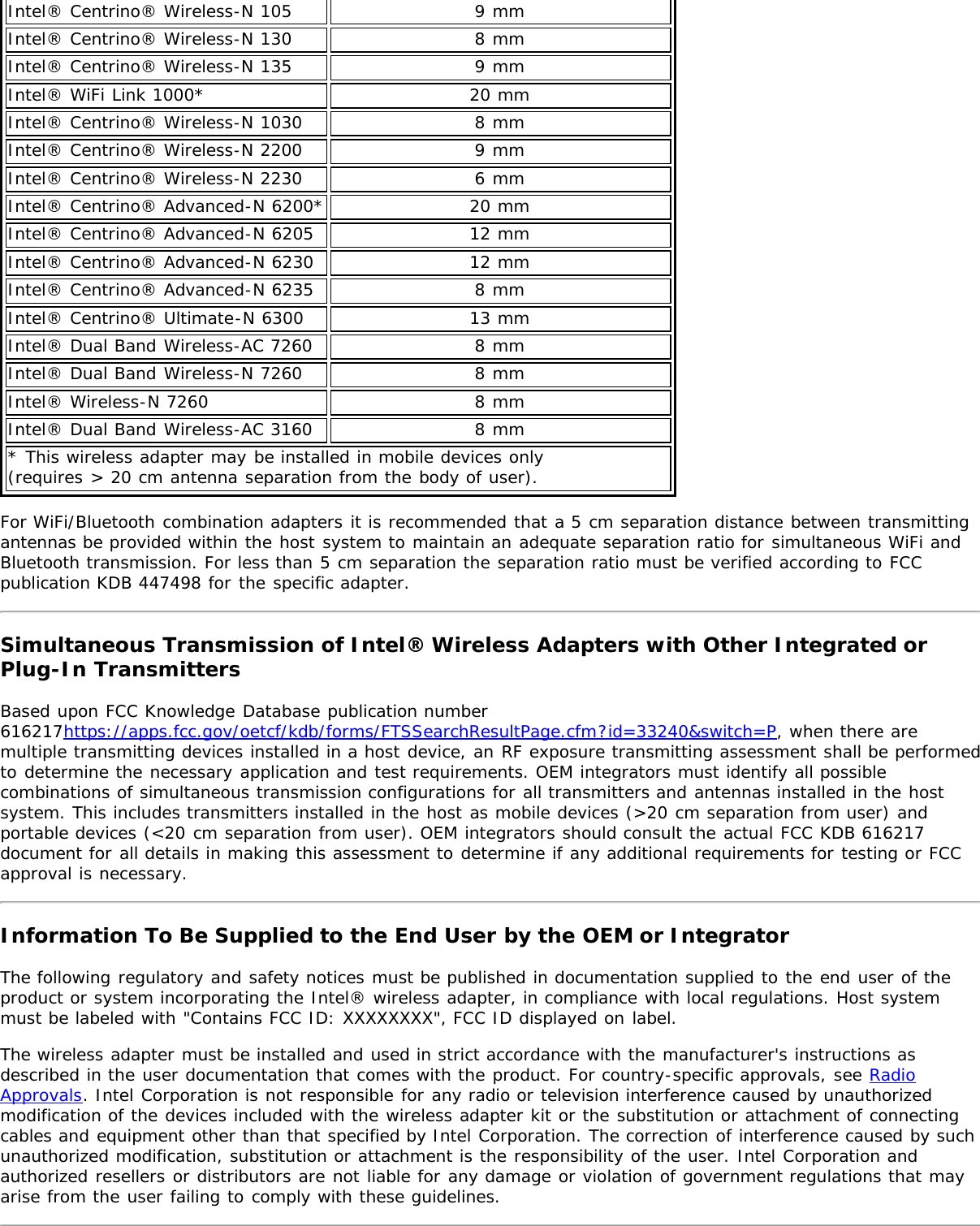
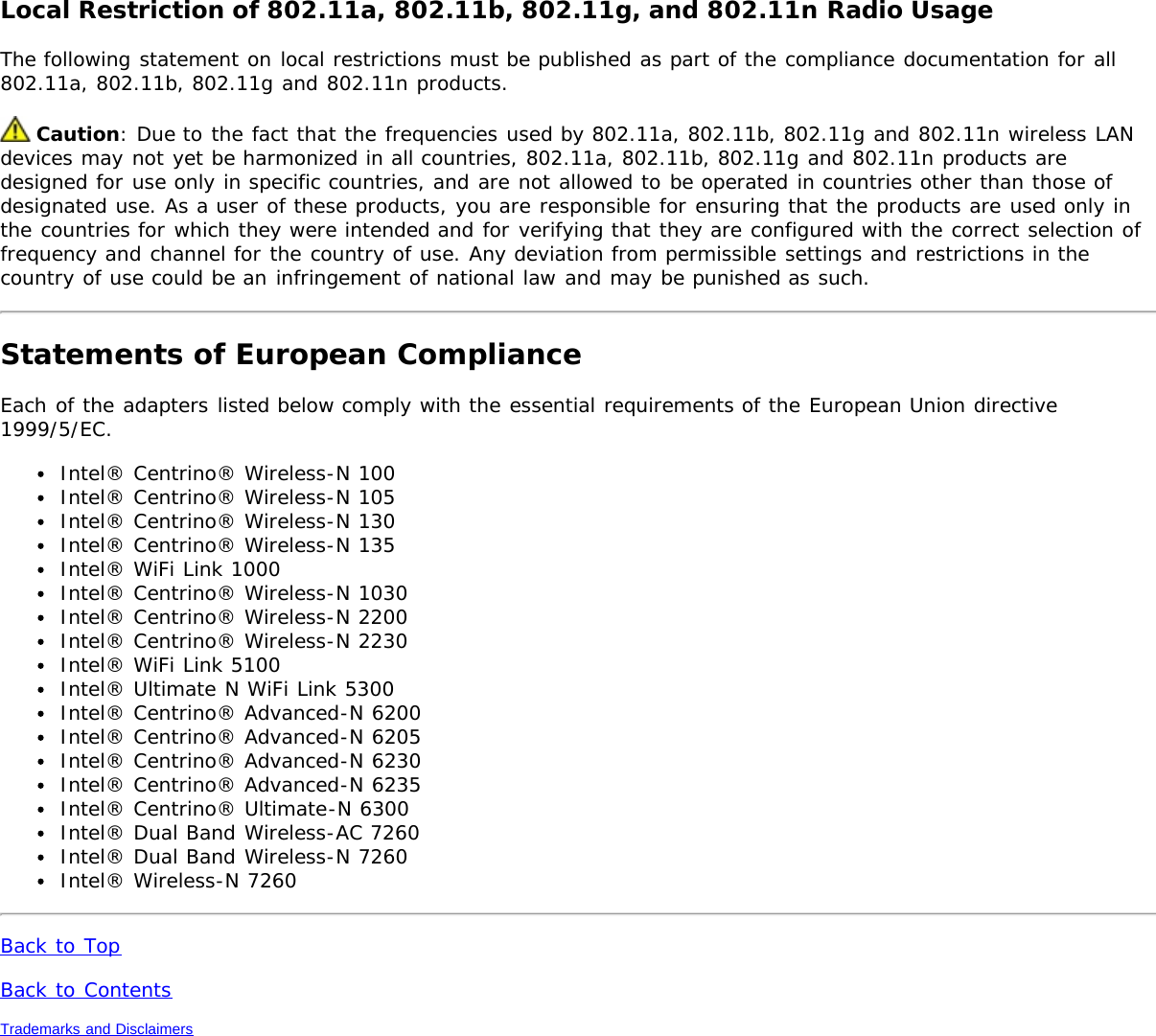
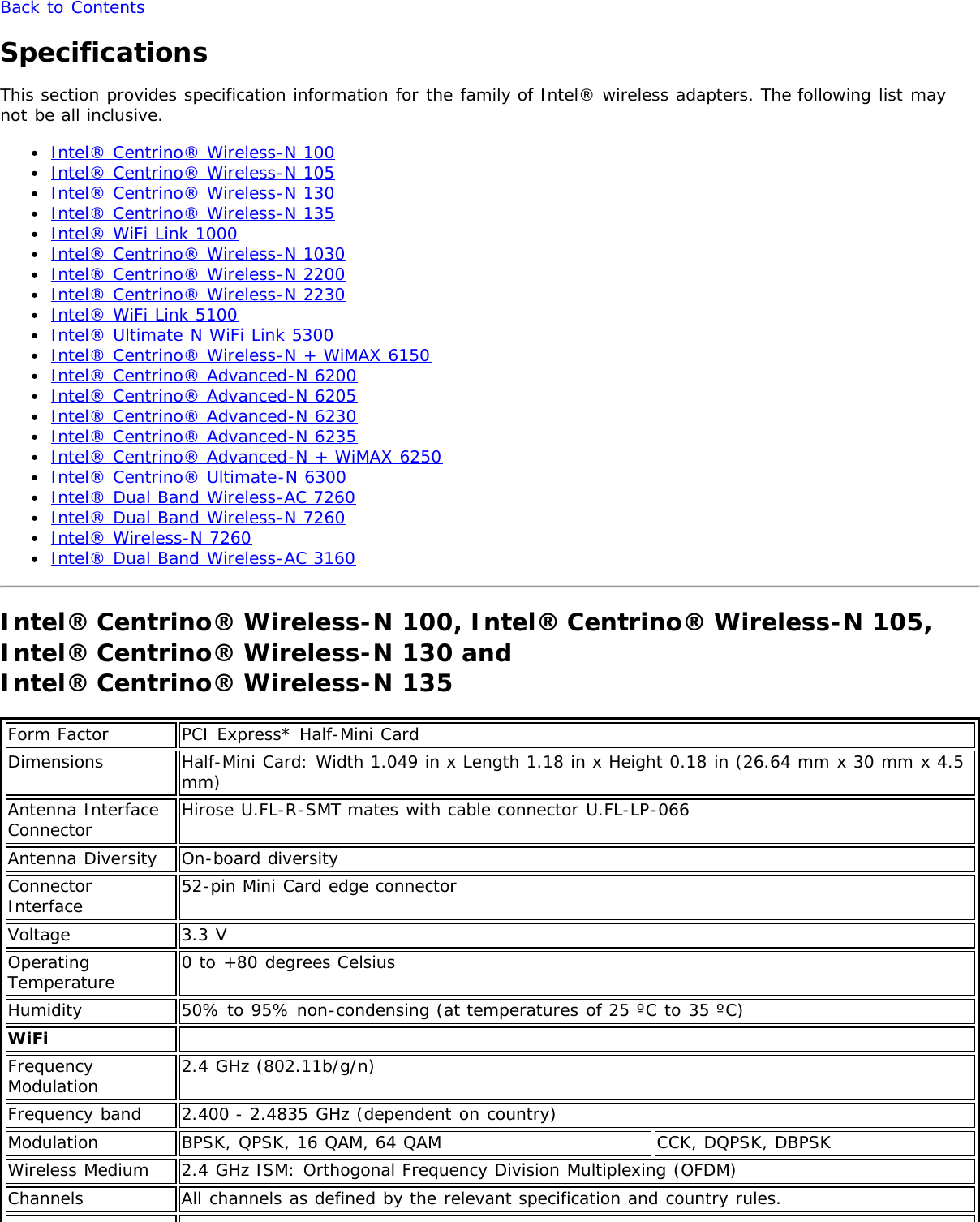
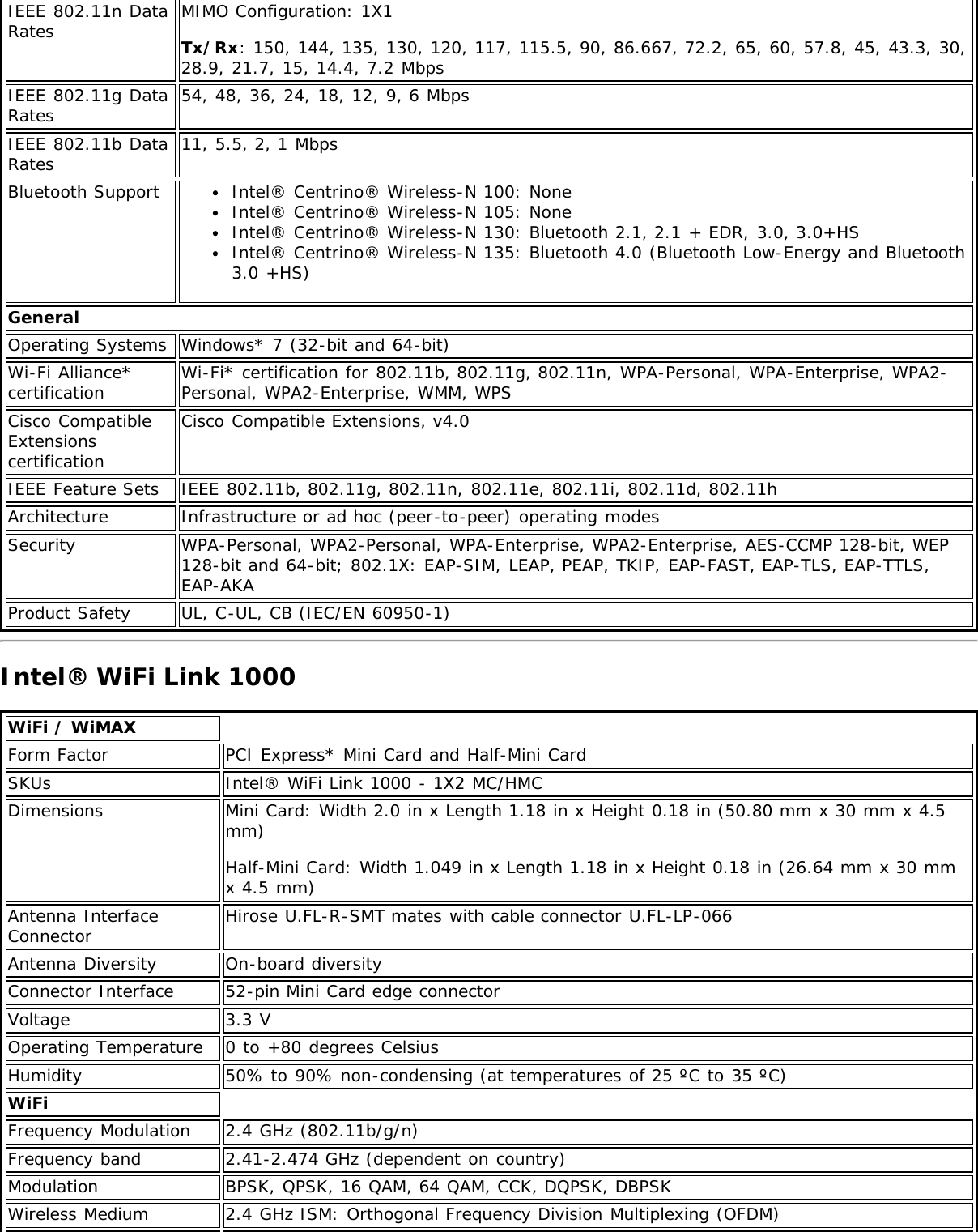
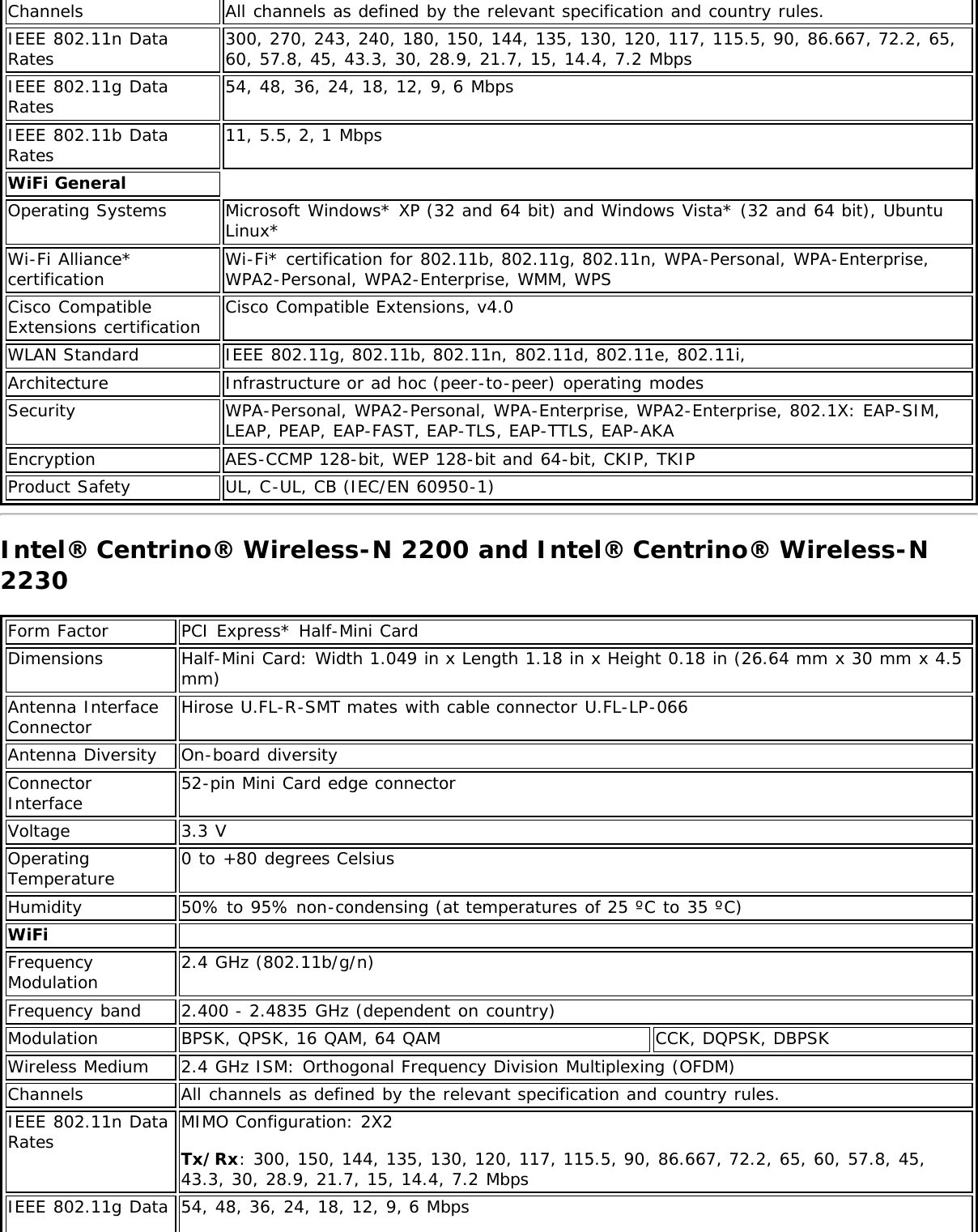
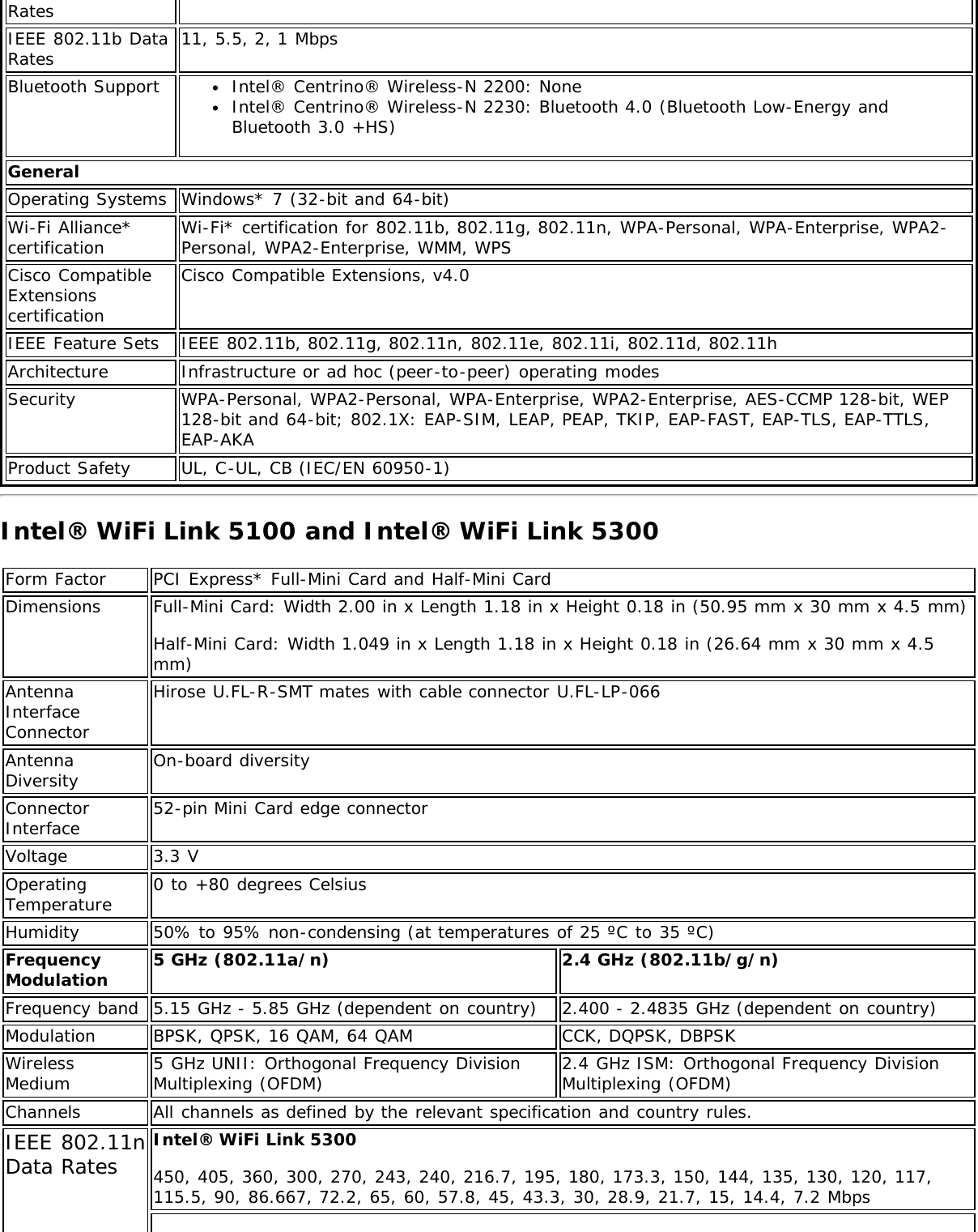
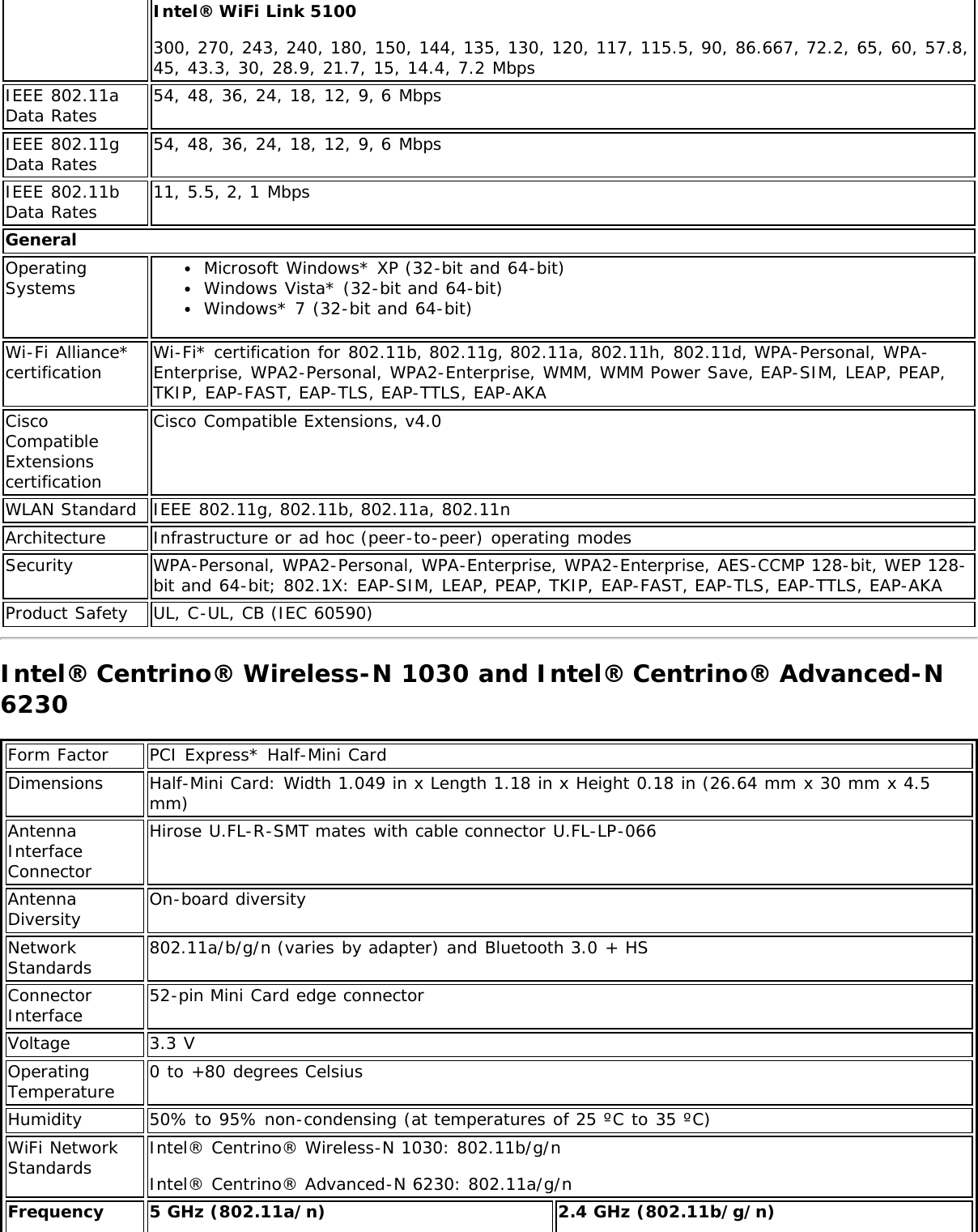
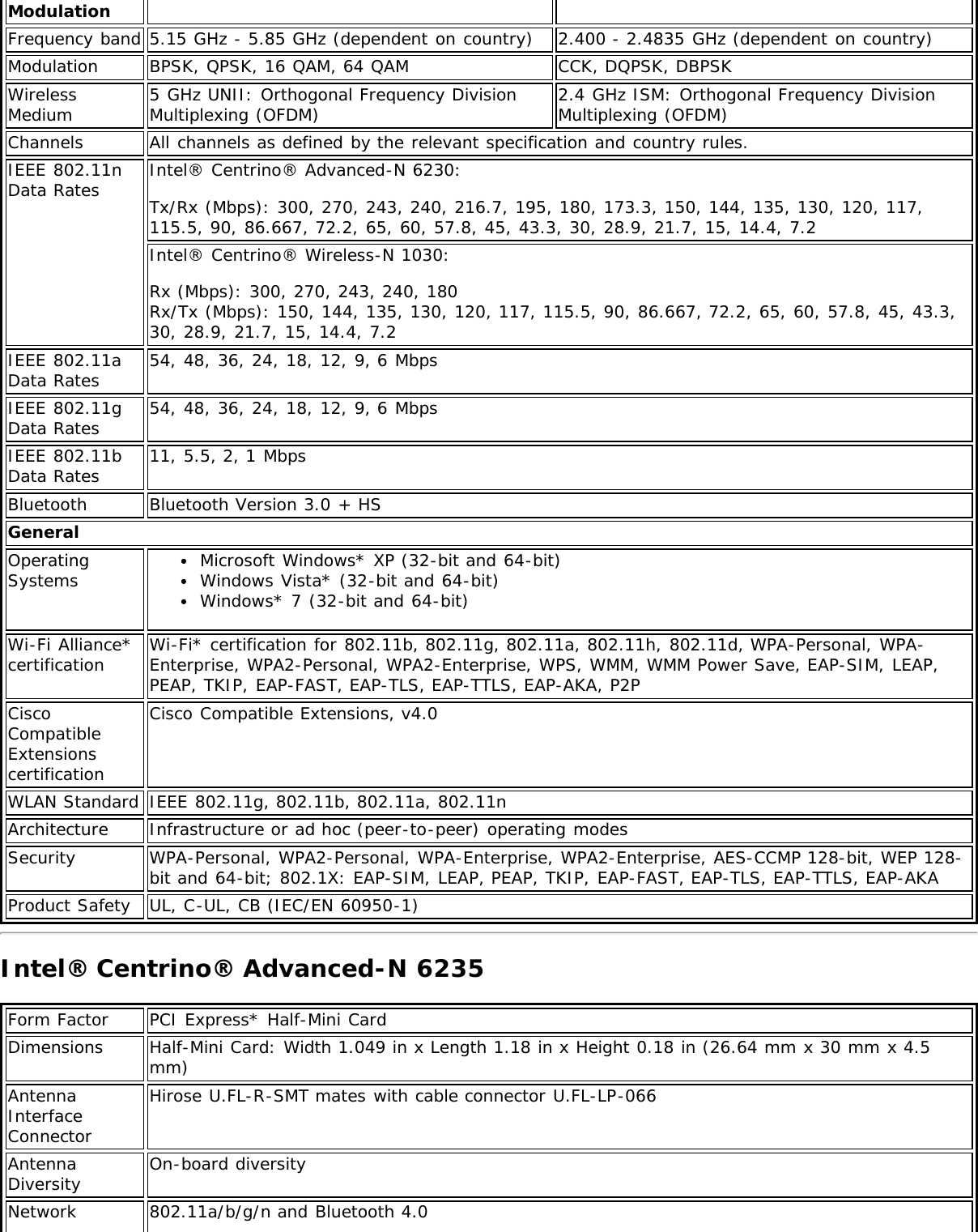
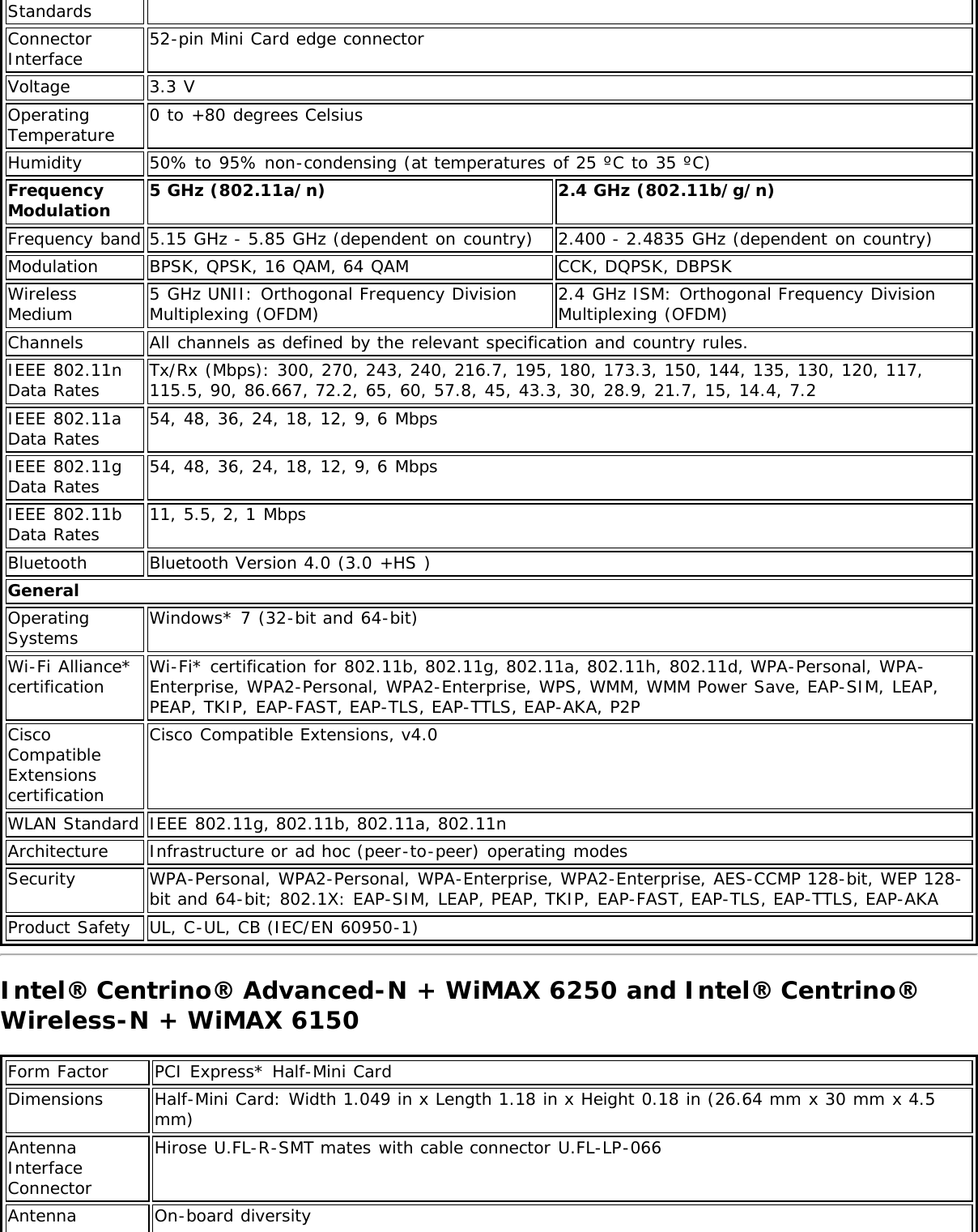
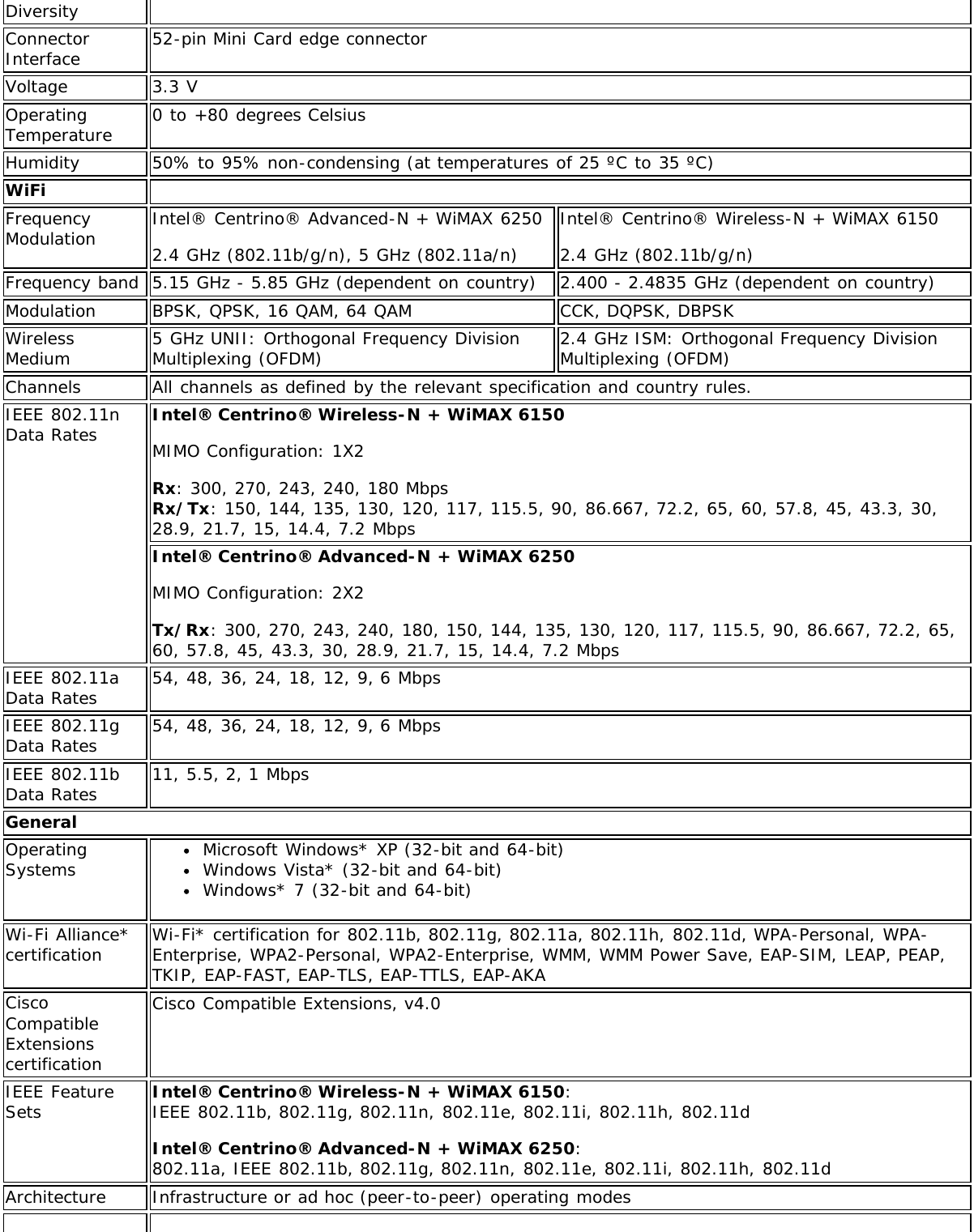
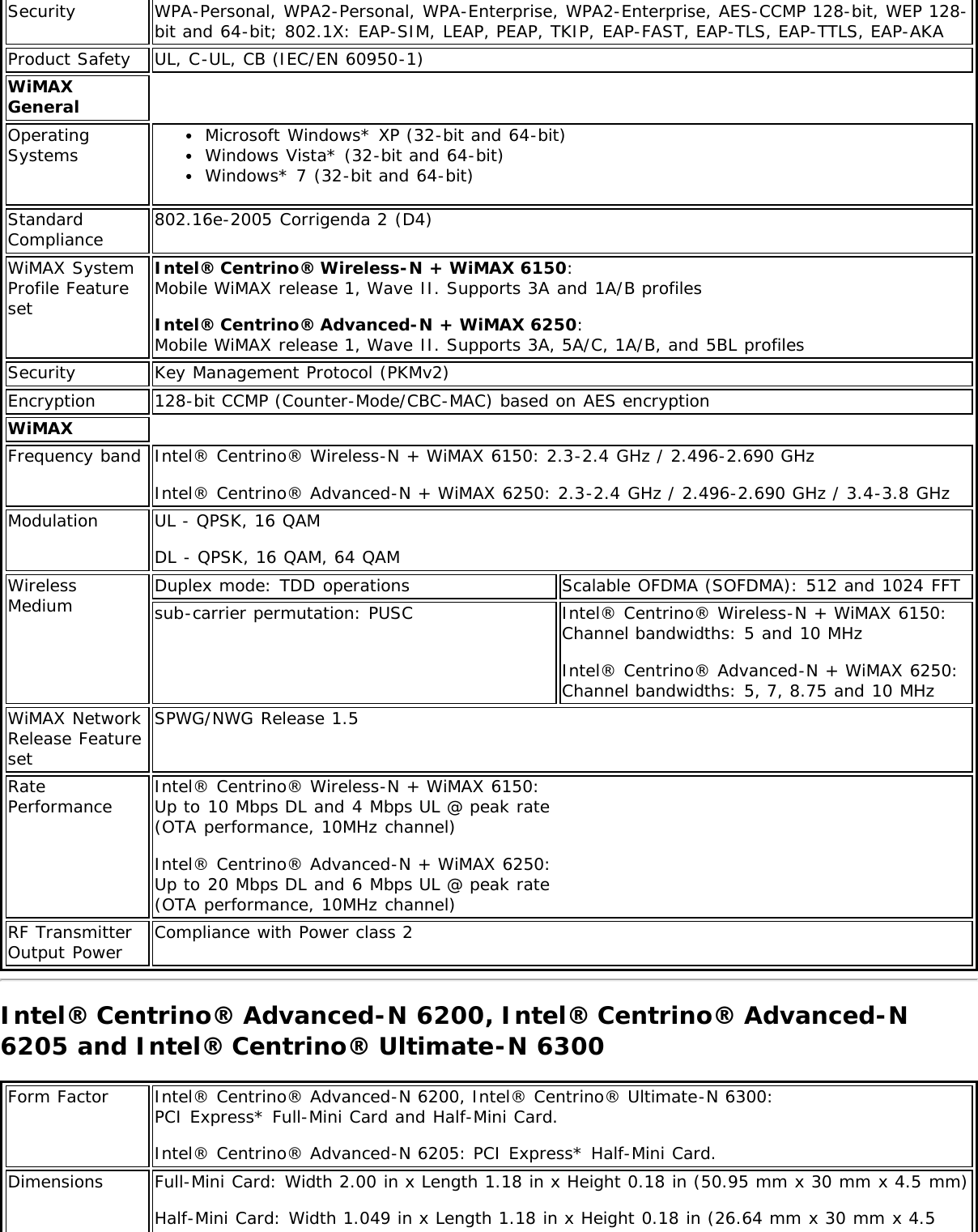
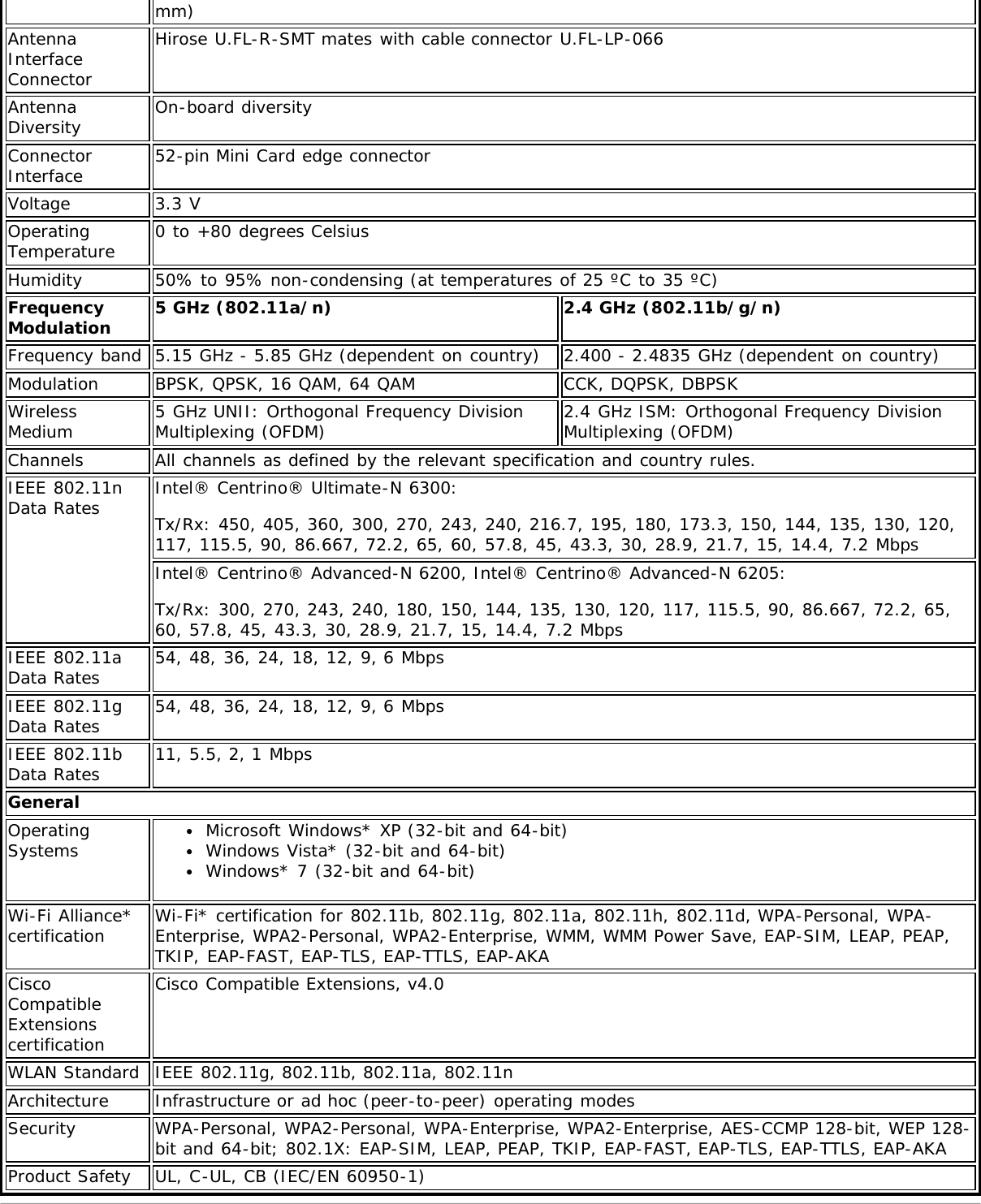
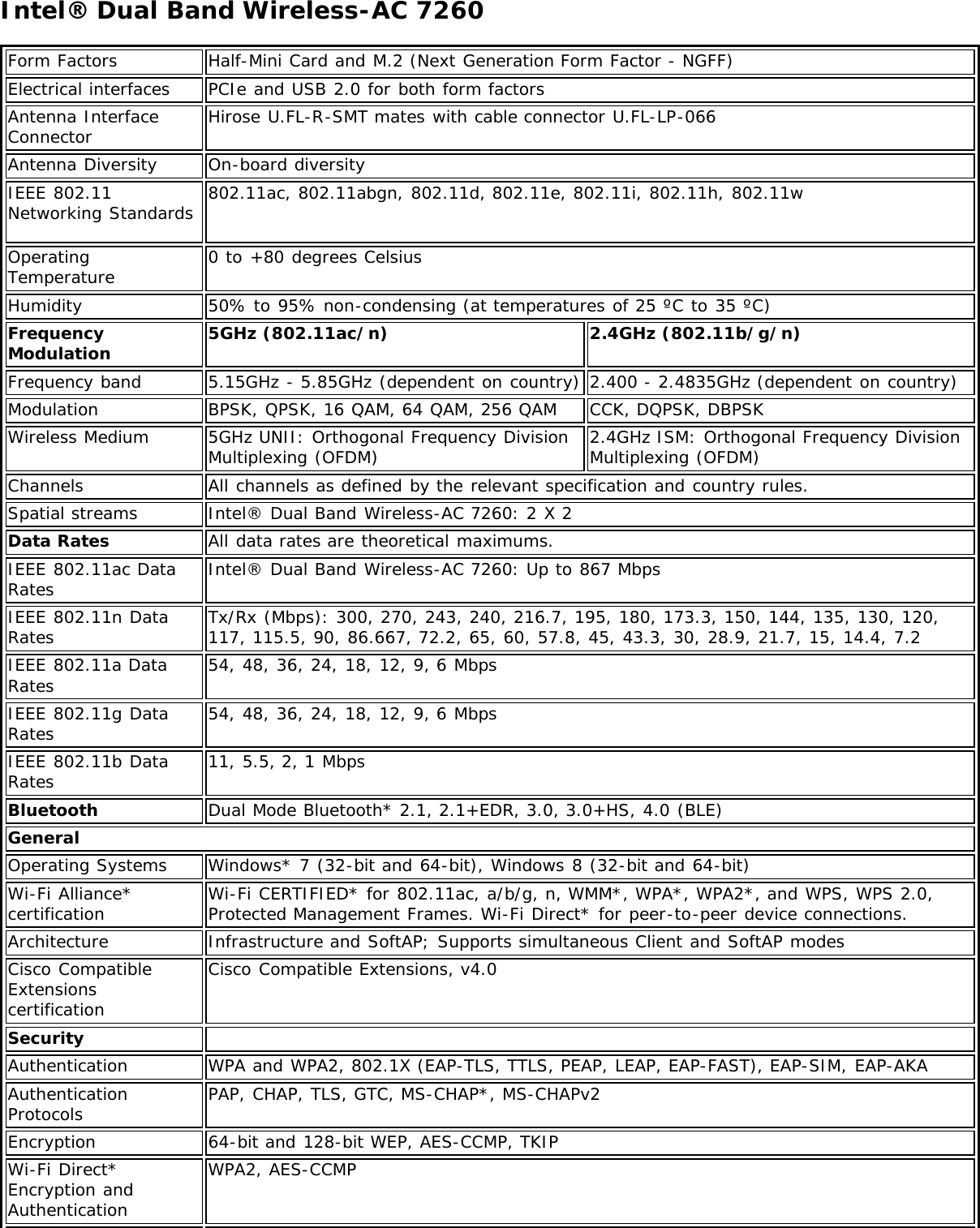
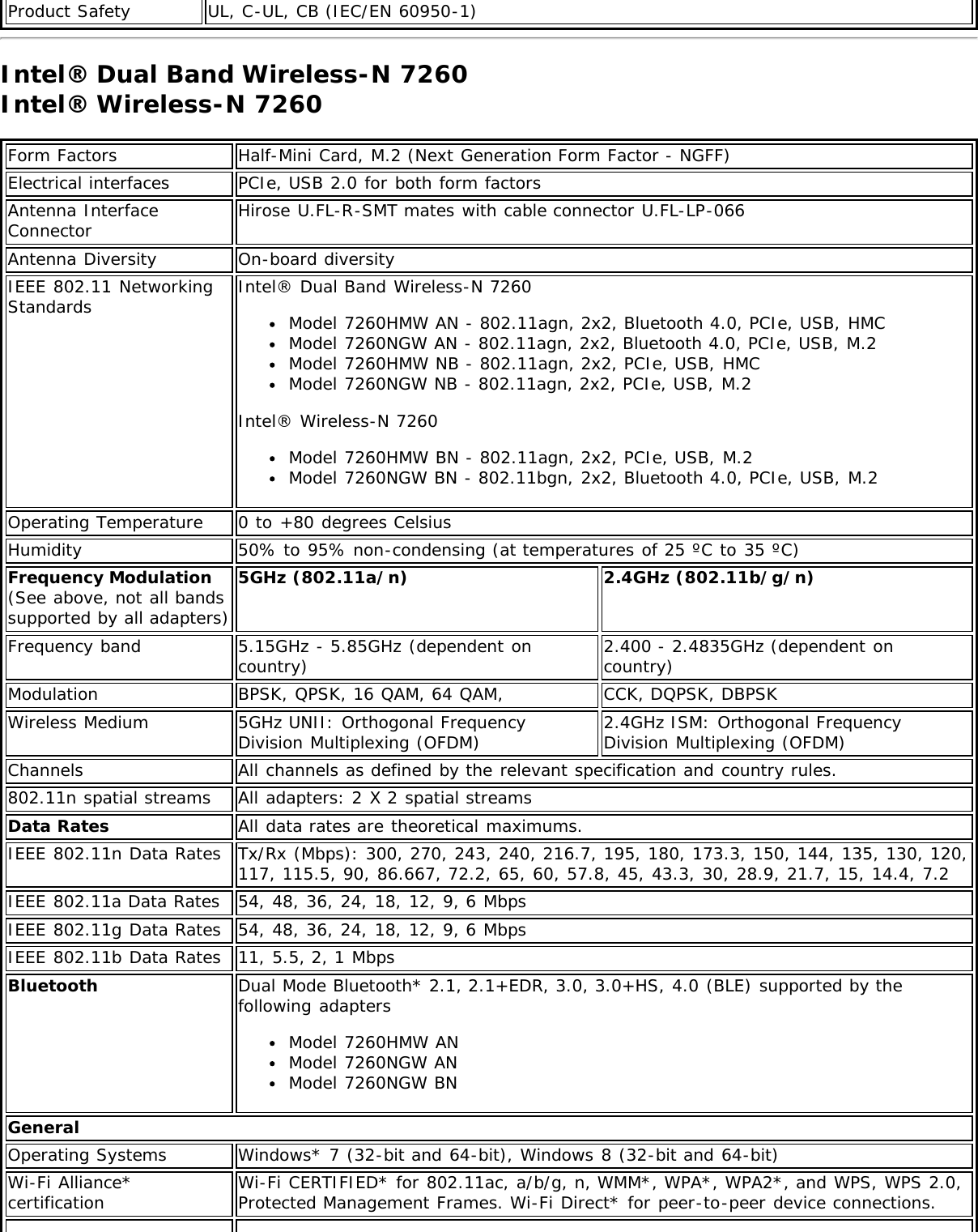
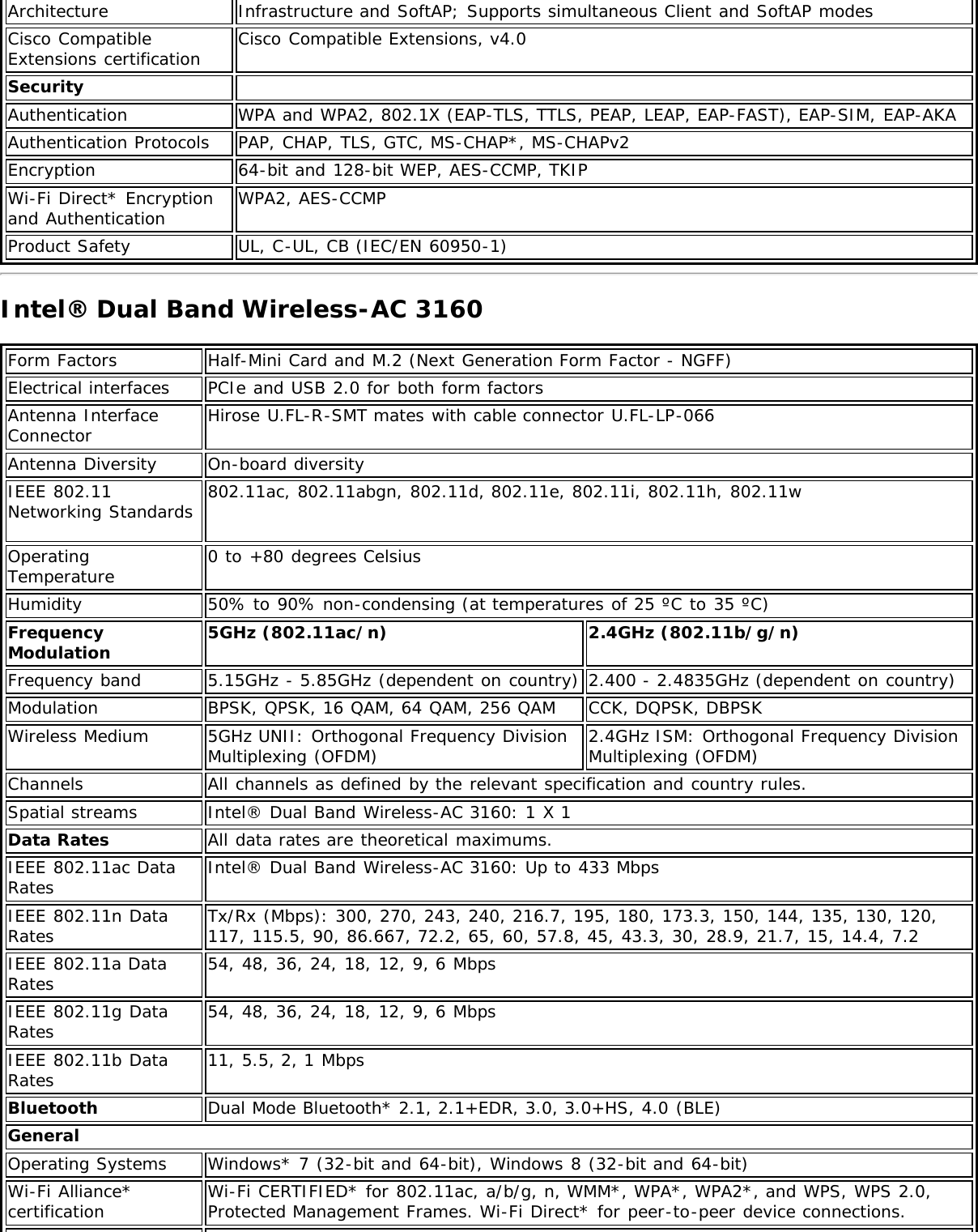
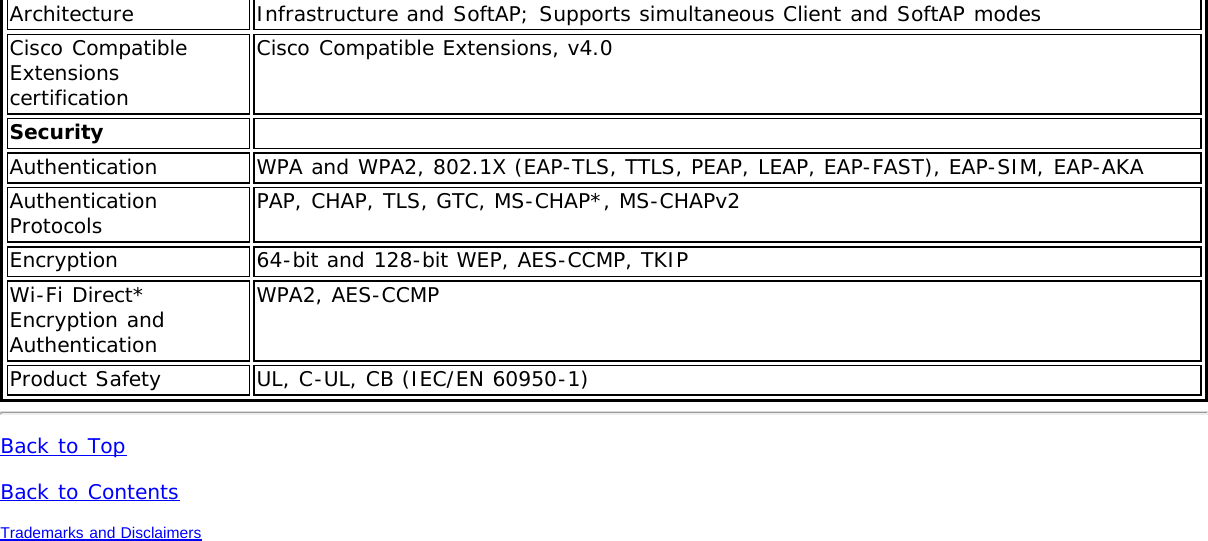
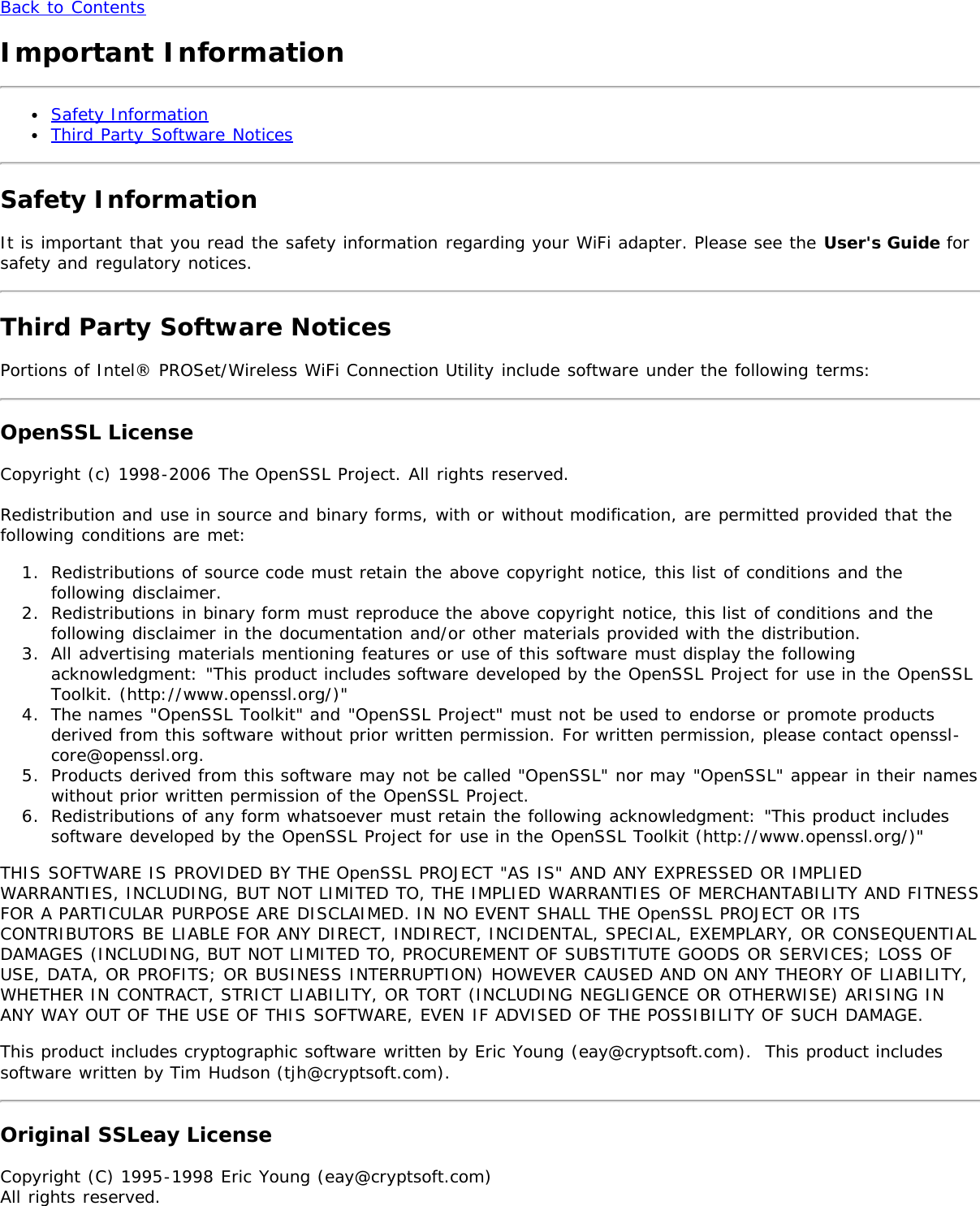
![This package is an SSL implementation written by Eric Young (eay@cryptsoft.com). The implementation waswritten so as to conform with Netscape's SSL.This library is free for commercial and non-commercial use as long as the following conditions are adhered to. Thefollowing conditions apply to all code found in this distribution, be it the RC4, RSA, lhash, DES, etc., code; not justthe SSL code. The SSL documentation included with this distribution is covered by the same copyright termsexcept that the holder is Tim Hudson (tjh@cryptsoft.com).Copyright remains Eric Young's, and as such any Copyright notices in the code are not to be removed. If thispackage is used in a product, Eric Young should be given attribution as the author of the parts of the library used.This can be in the form of a textual message at program startup or in documentation (online or textual) providedwith the package.Redistribution and use in source and binary forms, with or without modification, are permitted provided that thefollowing conditions are met:1. Redistributions of source code must retain the copyright notice, this list of conditions and the followingdisclaimer.2. Redistributions in binary form must reproduce the above copyright notice, this list of conditions and thefollowing disclaimer in the documentation and/or other materials provided with the distribution.3. All advertising materials mentioning features or use of this software must display the followingacknowledgement: "This product includes cryptographic software written by Eric Young (eay@cryptsoft.com)"The word 'cryptographic' can be left out if the routines from the library being used are not cryptographicrelated.4. If you include any Windows specific code (or a derivative thereof) from the apps directory (application code)you must include an acknowledgement: "This product includes software written by Tim Hudson(tjh@cryptsoft.com)"THIS SOFTWARE IS PROVIDED BY ERIC YOUNG "AS IS:' AND ANY EXPRESS OR IMPLIED WARRANTIES,INCLUDING, BUT NOT LIMITED TO, THE IMPLIED WARRANTIES OF MERCHANTABILITY AND FITNESS FOR APARTICULAR PURPOSE ARE DISCLAIMED. IN NO EVENT SHALL THE AUTHOR OR CONTRIBUTORS BE LIABLE FORANY DIRECT, INDIRECT, INCIDENTAL, SPECIAL, EXEMPLARY, OR CONSEQUENTIAL DAMAGES (INCLUDING, BUTNOT LIMITED TO, PROCUREMENT OF SUBSTITUTE GOODS OR SERVICES; LOSS OF USE, DATA, OR PROFITS; ORBUSINESS INTERRUPTION) HOWEVER CAUSED AND ON ANY THEORY OF LIABILITY, WHETHER IN CONTRACT,STRICT LIABILITY, OR TORT (INCLUDING NEGLIGENCE OR OTHERWISE) ARISING IN ANY WAY OUT OF THE USEOF THIS SOFTWARE, EVEN IF ADVISED OF THE POSSIBILITY OF SUCH DAMAGE.The license and distribution terms for any publicly available version or derivative of this code cannot be changed. i.e. this code cannot simply be copied and put under another distribution license [including the GNU PublicLicense.]zlib.h -- interface of the 'zlib' general purpose compression library, version 1.2.3, July18th, 2005Copyright (C) 1995-2005 Jean-loup Gailly and Mark AdlerThis software is provided 'as-is', without any express or implied warranty. In no event will the authors be heldliable for any damages arising from the use of this software. Permission is granted to anyone to use this softwarefor any purpose, including commercial applications, and to alter it and redistribute it freely, subject to thefollowing restrictions:1. The origin of this software must not be misrepresented; you must not claim that you wrote the originalsoftware. If you use this software in a product, an acknowledgment in the product documentation would beappreciated but is not required.2. Altered source versions must be plainly marked as such, and must not be misrepresented as being theoriginal software.3. This notice may not be removed or altered from any source distribution.Jean-loup Gailly jloup@gzip.orgMark Adler madler@alumni.caltech.edu](https://usermanual.wiki/Intel/3160H.User-Manual/User-Guide-2005052-Page-36.png)
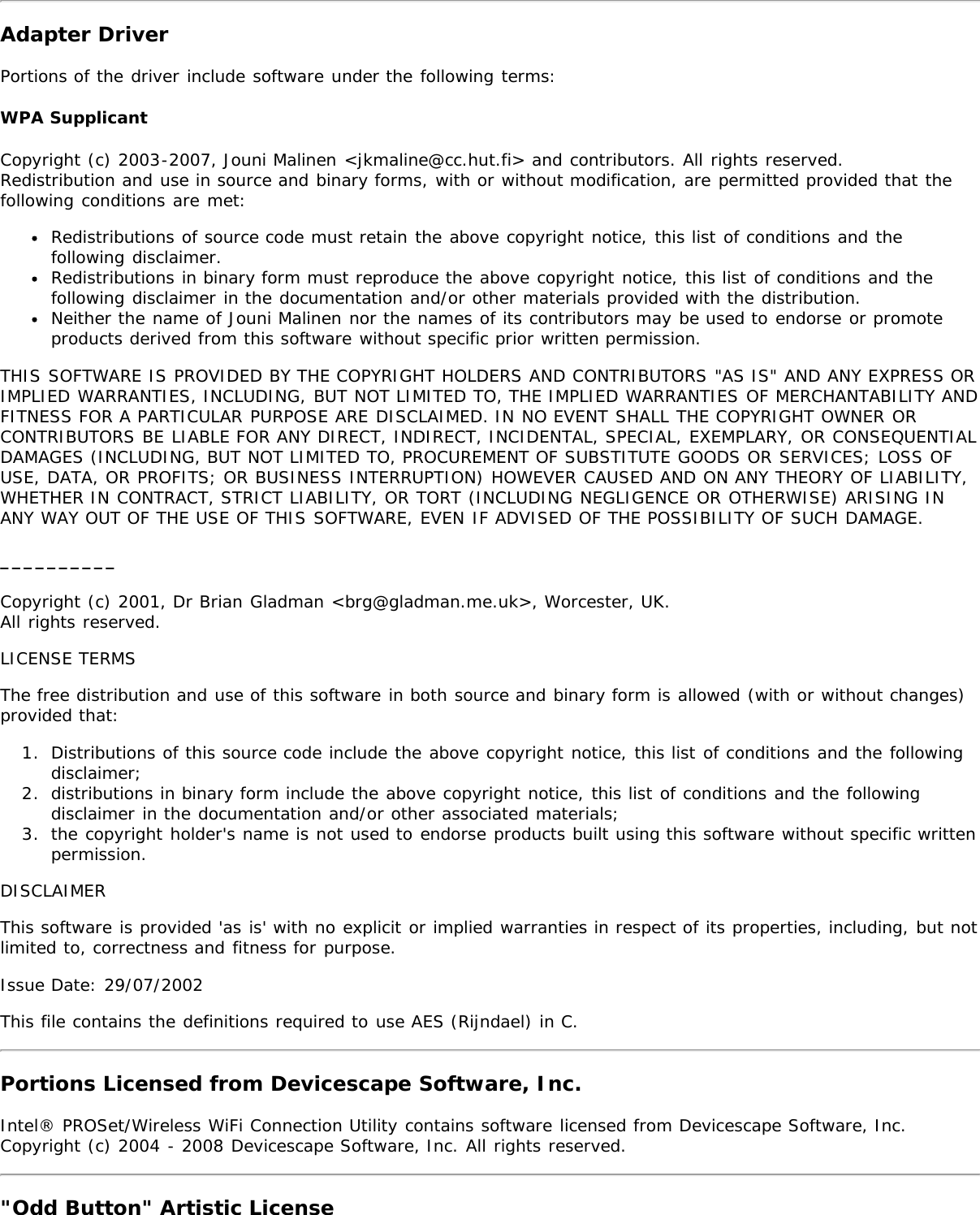

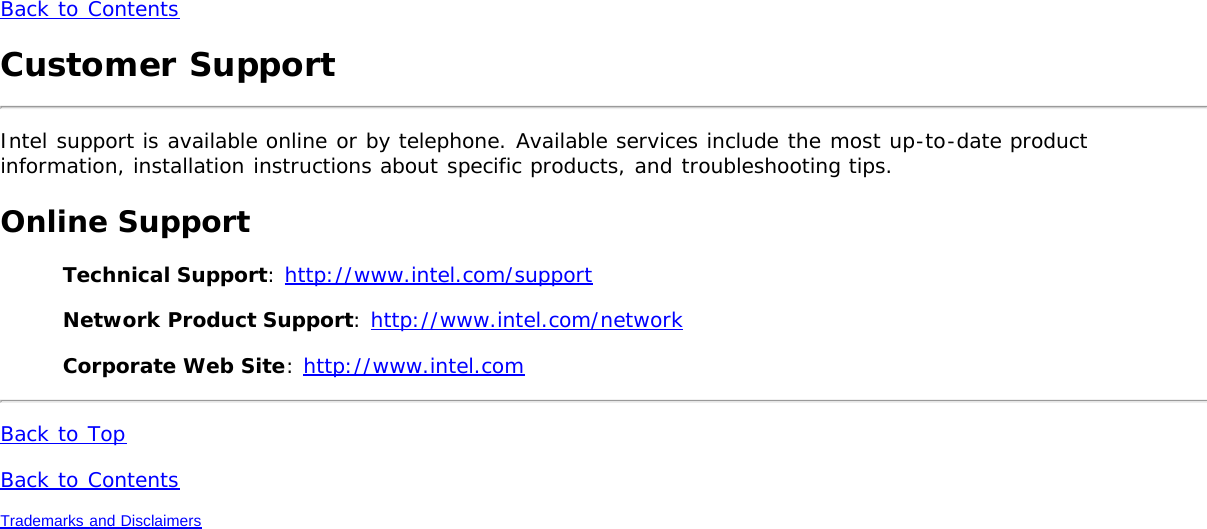
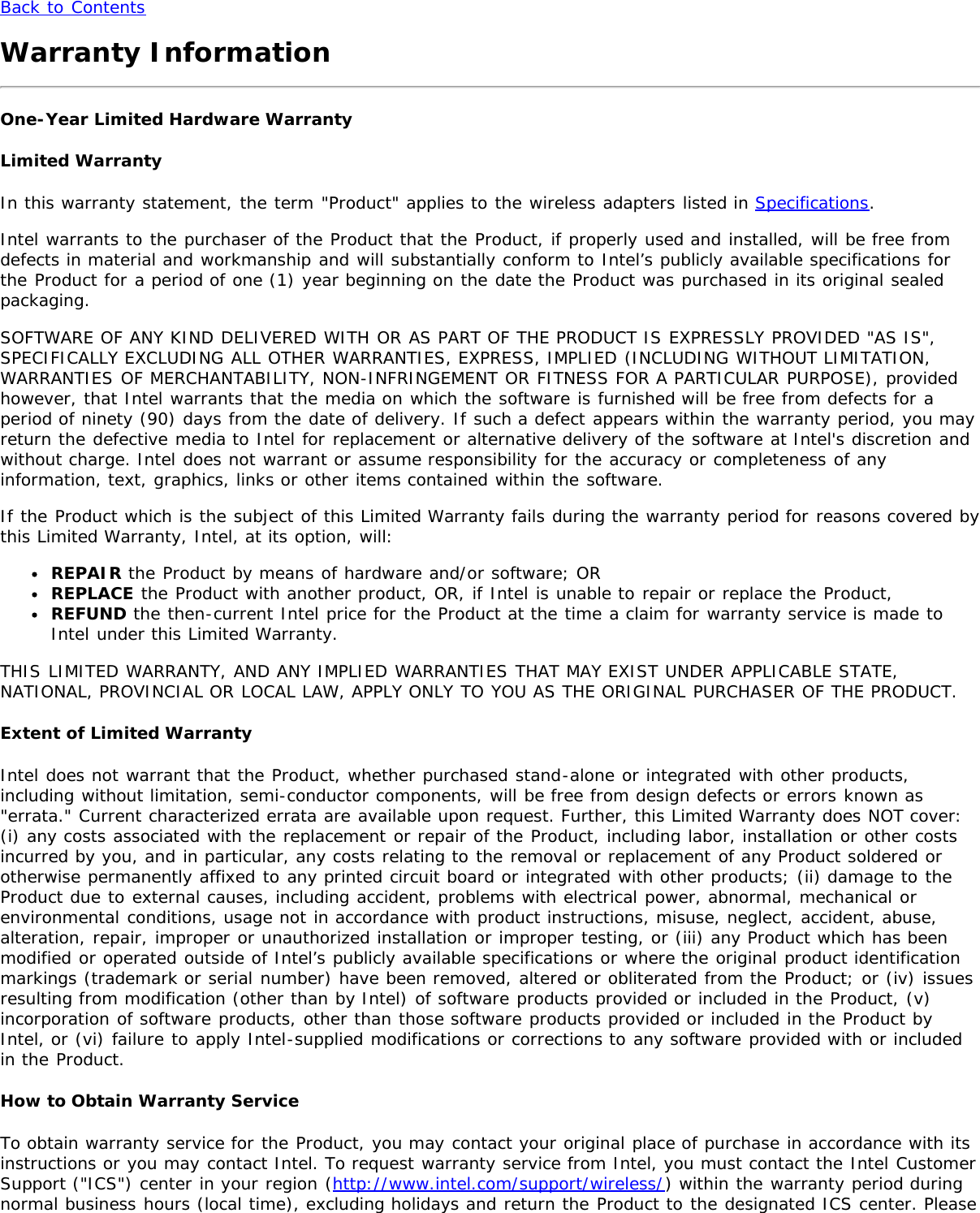
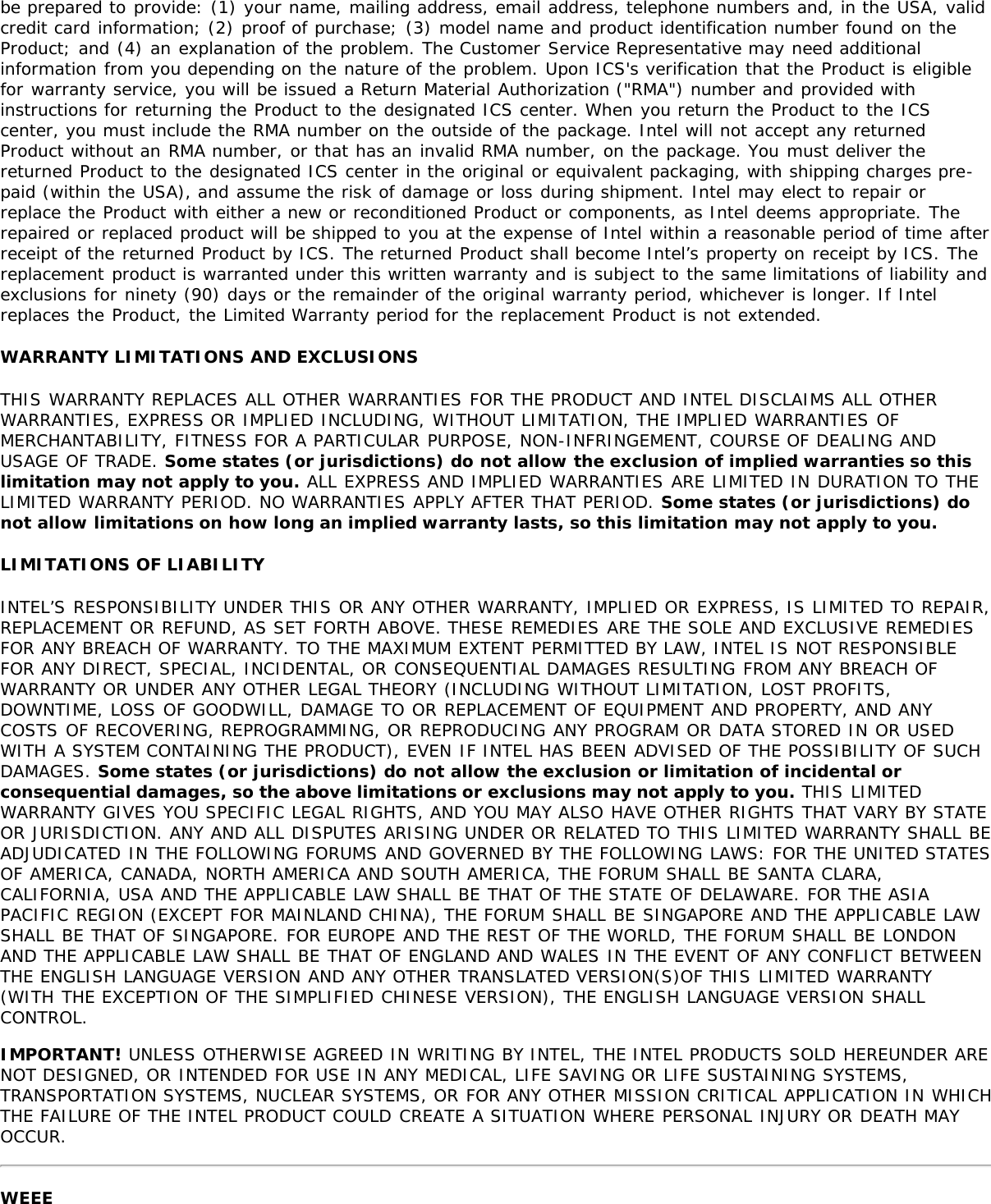

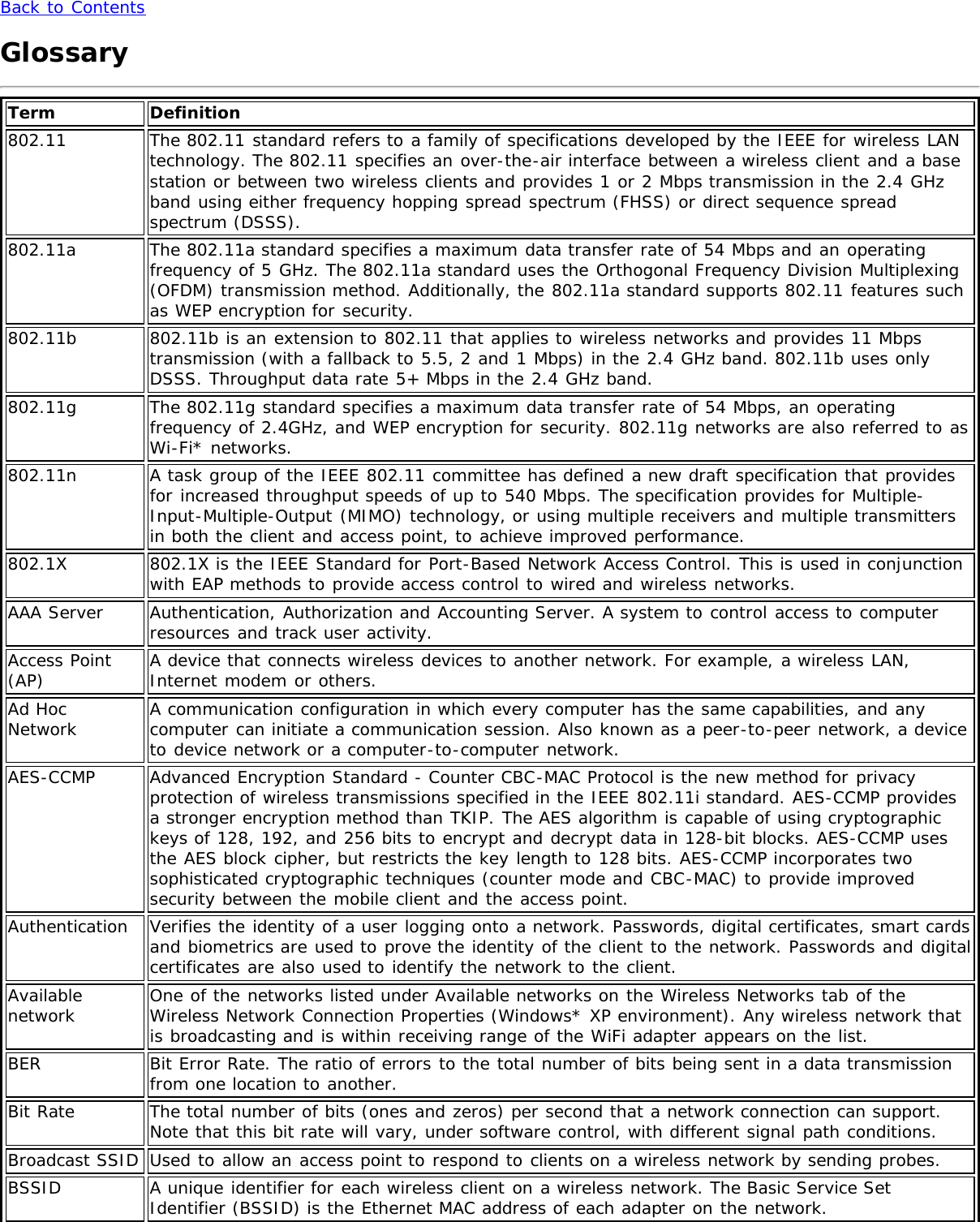
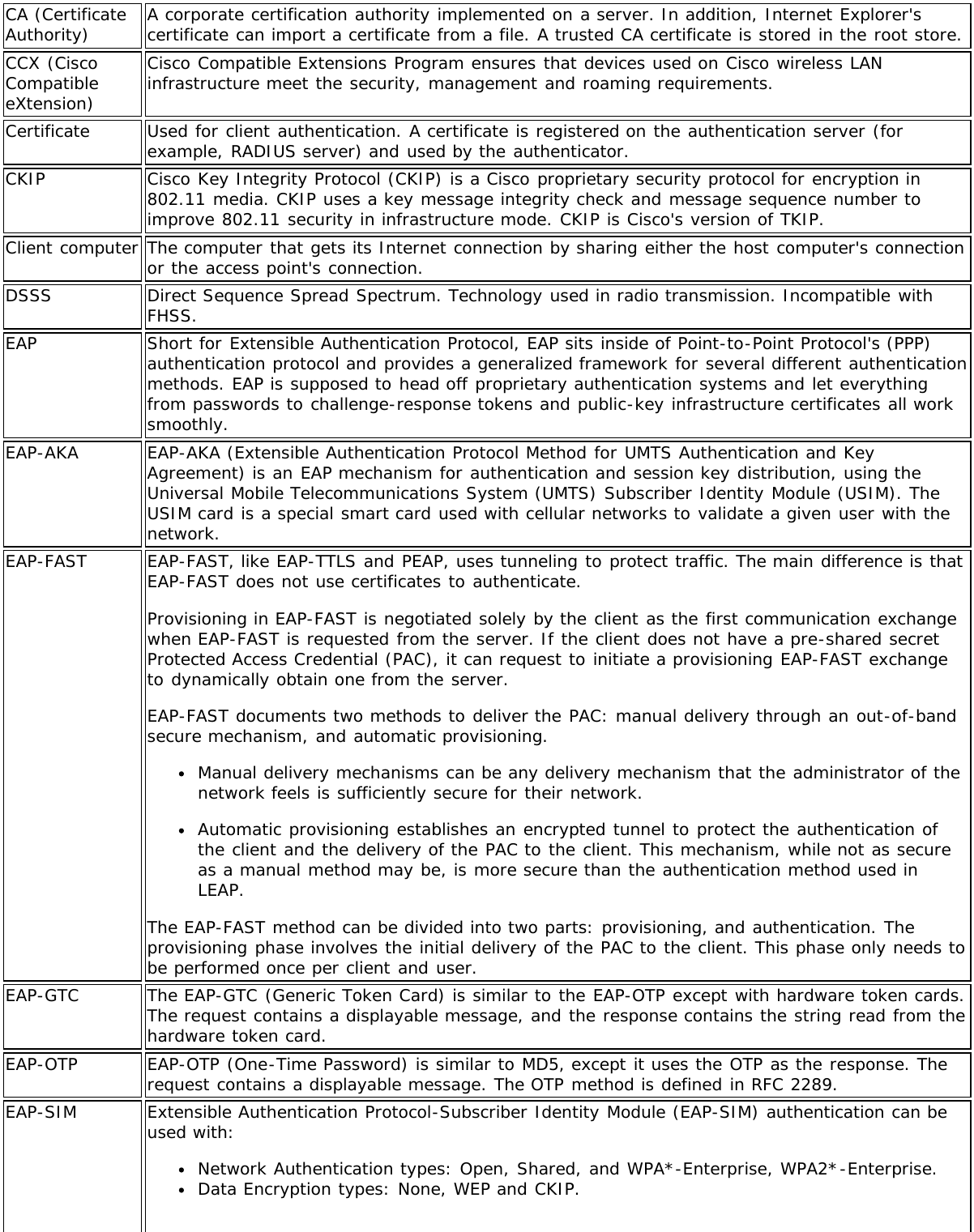
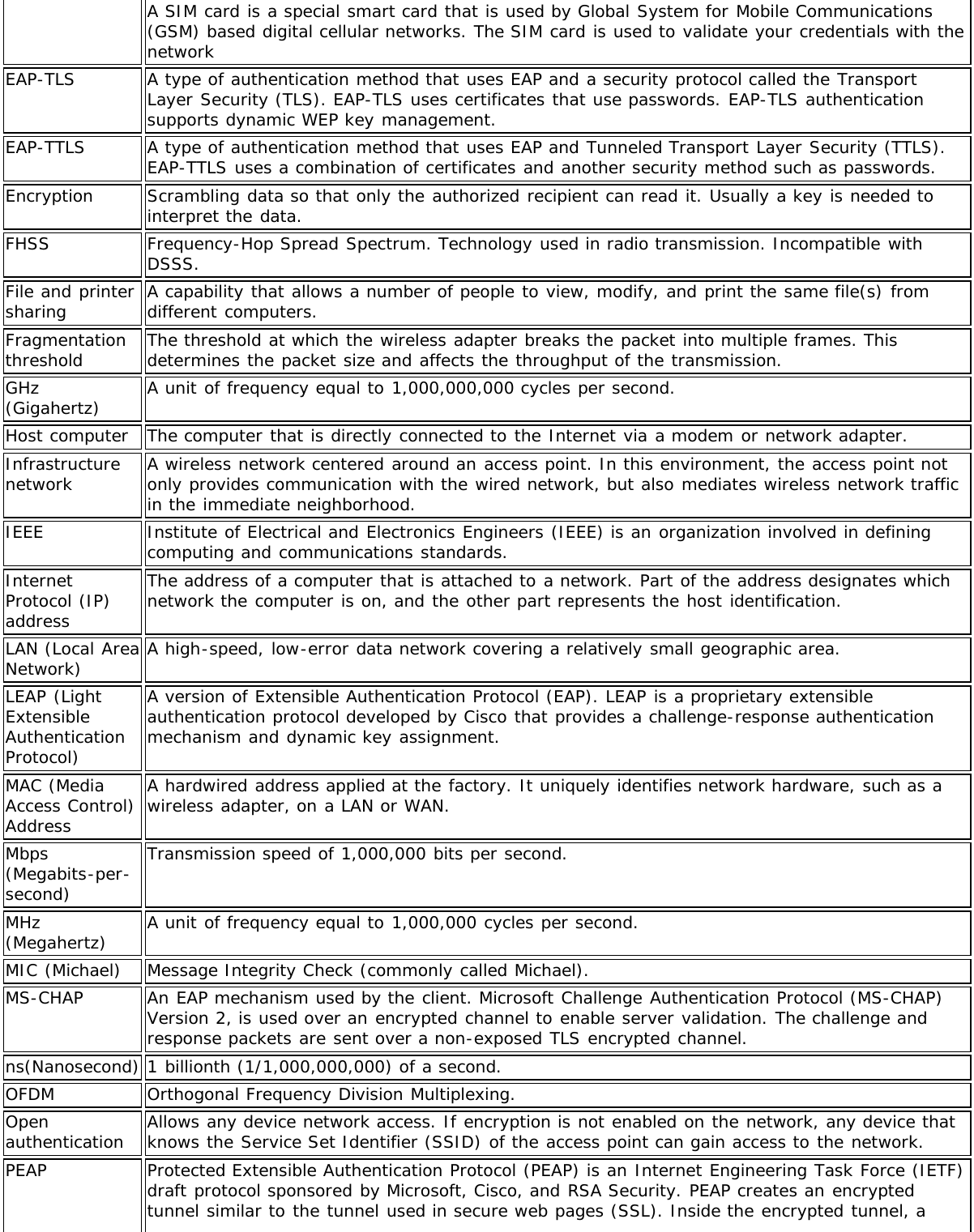

![Protocol) TKIP is part of the IEEE 802.11i encryption standard for wireless networks. TKIP is the nextgeneration of WEP, the Wired Equivalency Protocol, which is used to secure 802.11 wirelessnetworks. TKIP provides per packet key mixing, a message integrity check and a re-keyingmechanism, thus fixing the flaws of WEP.TLS (TransportLayer Security) A type of authentication method using the Extensible Authentication Protocol (EAP) and asecurity protocol called the Transport Layer Security (TLS). EAP-TLS uses certificates which usepasswords. EAP-TLS authentication supports dynamic WEP key management. The TLS protocol isintended to secure and authenticate communications across a public network through dataencryption. The TLS Handshake Protocol allows the server and client to provide mutualauthentication and to negotiate an encryption algorithm and cryptographic keys before data istransmitted.TTLS (TunneledTransport LayerSecurity)These settings define the protocol and the credentials used to authenticate a user. In TTLS, theclient uses EAP-TLS to validate the server and create a TLS-encrypted channel between theclient and server. The client can use another authentication protocol. Typically password-basedprotocols challenge over this encrypted channel to enable server validation. The challenge andresponse packets are sent over a non-exposed TLS encrypted channel. TTLS implementationstoday support all methods defined by EAP, as well as several older methods (CHAP, PAP, MS-CHAP and MS-CHAP-V2). TTLS can easily be extended to work with new protocols by definingnew attributes to support new protocols.WEP (WiredEquivalentPrivacy)Wired Equivalent Privacy, 64- and 128-bit (64-bit is sometimes referred to as 40-bit). This is alow-level encryption technique designed to give the user about the same amount of privacy thathe would expect from a LAN. WEP is a security protocol for wireless local area networks(WLANs) defined in the 802.11b standard. WEP is designed to provide the same level of securityas that of a wired LAN. WEP aims to provide security by data over radio waves so that it isprotected as it is transmitted from one end point to another.WEP Key Either a pass phrase or hexadecimal key.The pass phrase must be 5 ASCII characters for 64-bit WEP or 13 ASCII characters for 128-bitWEP. For pass phrases, 0-9, a-z, A-Z, and ~!@#$%^&*()_+|`-={}|[]\:";'<>?,./ are all validcharacters.The hex key must be 10 hexadecimal characters (0-9, A-F) for 64-bit WEP or 26 hexadecimalcharacters (0-9, A-F) for 128-bit WEP.Wi-Fi*(WirelessFidelity)Is meant to be used generically when referring of any type to 802.11 network, whether802.11b, 802.11a, or dual-band.WiMAX WiMAX, the Worldwide Interoperability for Microwave Access, is a telecommunicationstechnology aimed at providing wireless data over long distances in a variety of ways, from point-to-point links to full mobile cellular type access. It is based on the IEEE 802.16 standard. Thename WiMAX was created by the WiMAX Forum, which was formed in June 2001 to promoteconformance and interoperability of the standard. The forum describes WiMAX as "a standards-based technology enabling the delivery of last mile wireless broadband access as an alternativeto cable and DSL."Wireless router A stand-alone wireless hub that allows any computer that has a wireless network adapter tocommunicate with another computer within the same network and to connect to the Internet.WLAN (WirelessLocal-AreaNetwork)A type of local-area network that uses high-frequency radio waves rather than wires tocommunicate between nodes.WPA* (Wi-FiProtectedAccess)This is a security enhancement that strongly increases the level of data protection and accesscontrol to a wireless network. WPA is an interim standard that will be replaced with the IEEE's802.11i standard upon its completion. WPA consists of RC4 and TKIP and provides support forBSS (Infrastructure) mode only. WPA and WPA2 are compatible.WPA2* (Wi-FiProtectedAccess 2)This is the second generation of WPA that complies with the IEEE TGi specification. WPA2consists of AES encryption, pre-authentication and PMKID caching. It provides support for BSS(Infrastructure) mode and IBSS (ad hoc) mode. WPA and WPA2 are compatible.WPA-Enterprise Wi-Fi Protected Access-Enterprise applies to corporate users. A new standards-based,interoperable security technology for wireless LAN (subset of IEEE 802.11i draft standard) thatencrypts data sent over radio waves. WPA is a Wi-Fi standard that was designed to improve](https://usermanual.wiki/Intel/3160H.User-Manual/User-Guide-2005052-Page-47.png)
